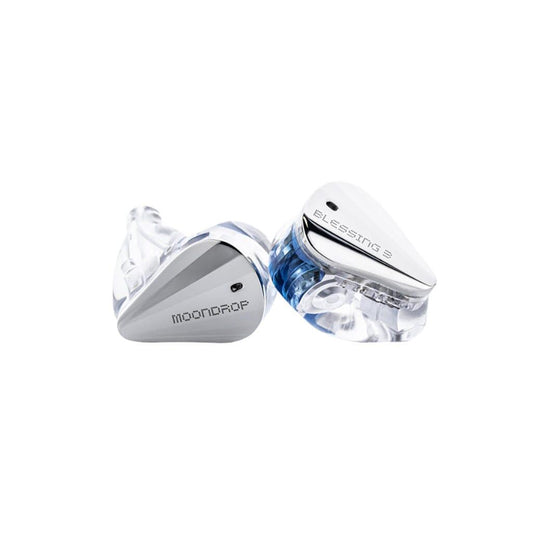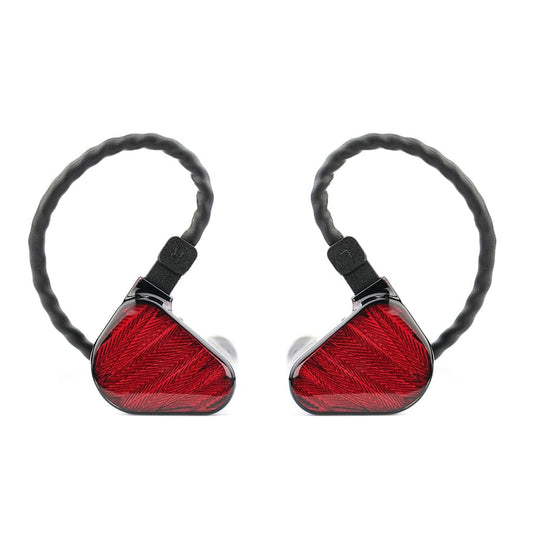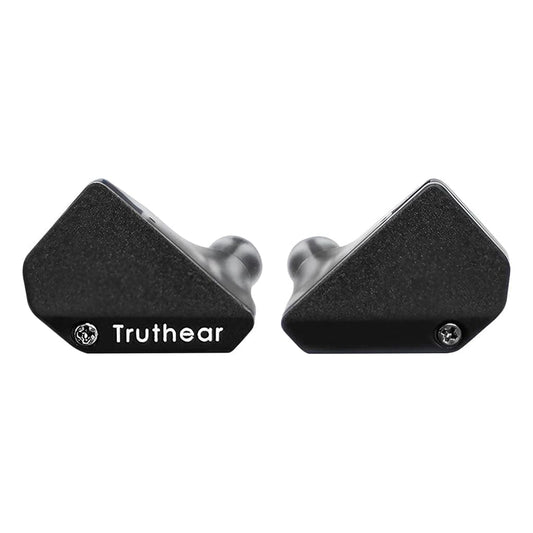The Shape of IEMs To Come
IEMs sound pretty different to headphones, but why? Why isn't there an "HD 650" of IEMs? Is it even possible to make one? Join listener as they discuss the Brüel and Kjaer Type 5128 Head and Torso Simulator, the previous generation of IEMs, and where we might be heading to capture the sound of over-ear headphones in IEMs.
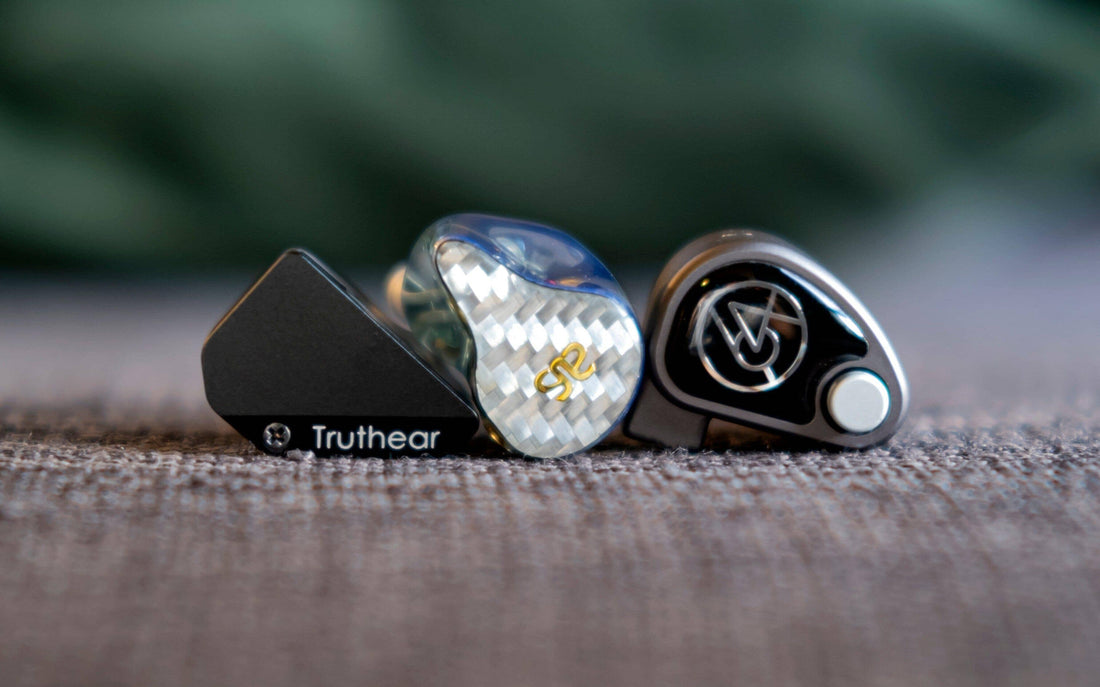
Introduction
Despite being a faster market segment, I think that IEMs—even those commonly touted as well-tuned—are far behind the best headphones when it comes to frequency response tuning.
After all this time, there still isn’t an HD 650 of IEMs. I’d like to discuss why that is.
When it comes to tuning over-ear headphones, the targets manufacturers use are often informed by what people prefer in speakers. With IEMs, this hasn’t totally been the case, though not for lack of trying.
Frequency response targets for analyzing the tonality of IEMs using the IEC 60318-4 (a.k.a. “711”) coupler have historically included Harman’s IEM targets, Crinacle’s IEF Neutral 2020 target, internal targets like Moondrop’s VDSF target, as well as myriad “reviewer targets.” None of which are without meaningful caveats to their relation to the tonality of speakers and headphones.
The arrival of the Brüel and Kjær Type 5128 Head and Torso Simulator means we’re finally able to see why IEMs have played by different rules for their tuning. We even get ideas for how to make IEMs sound more akin to headphones, but only if we’re willing to admit that IEMs haven’t been playing on a level field until now.
What Makes The B&K 5128 So Special?
To understand why IEMs might be changing, we need to first talk about why the 5128 is an upgrade from the forty-year old 711 standard.
The short answer is that the 5128 more accurately models the acoustic impedance of the human ear. The long answer involves an explanation of what the heck “acoustic impedance” actually is.
This is covered at length in Wideband impedance measurement in the human ear canal; In vivo study on 32 subjects (Jønsson et al. 2018) and I suggest everyone read it. It is a much more detailed and thorough accounting of some of the science that led to the 5128’s creation.
What is Acoustic Impedance?
Acoustic impedance is the relationship between the air pressure and the flow of air particles. Think about water flow through a pipe: to move a liter of water through a pipe that’s 1cm wide in a minute takes far more pressure than to move it through a pipe 10cm wide. The reason is that the smaller pipe presents a higher resistance to the flow of water.
Impedance simply extends this metaphor to the water moving back and forth, rather than all in one direction. Because sound is made up of alternating pressures, it isn’t the same as water flowing one way continuously.
Impedance generally describes a single part of a system, but in our cases where we have an ear and a headphone/IEM and alternating pressure between them, impedances interact.
Sources (things that are putting out energy, eg. headphones/IEMs) have “output impedance”. Loads (things the energy is going to, eg. ears, measurement rigs/microphones) have “input impedance”. These acoustic impedances interact by presenting both resistive and reactive force to one another.
Imagine a very narrow pipe that leads into a very wide pipe—the rate of flow will stay the same, but the pressure will drop as the water moves into the wider pipe. The high “output” impedance (of the narrow pipe) results in a change at the “input” of a low impedance (the wide pipe).
This matters to us, because pressure is what we hear as humans—your eardrum isn’t a particle movement detector, it’s a pressure sensor. After all, “frequency response” is the frequency-specific sound pressure we measure from a headphone!
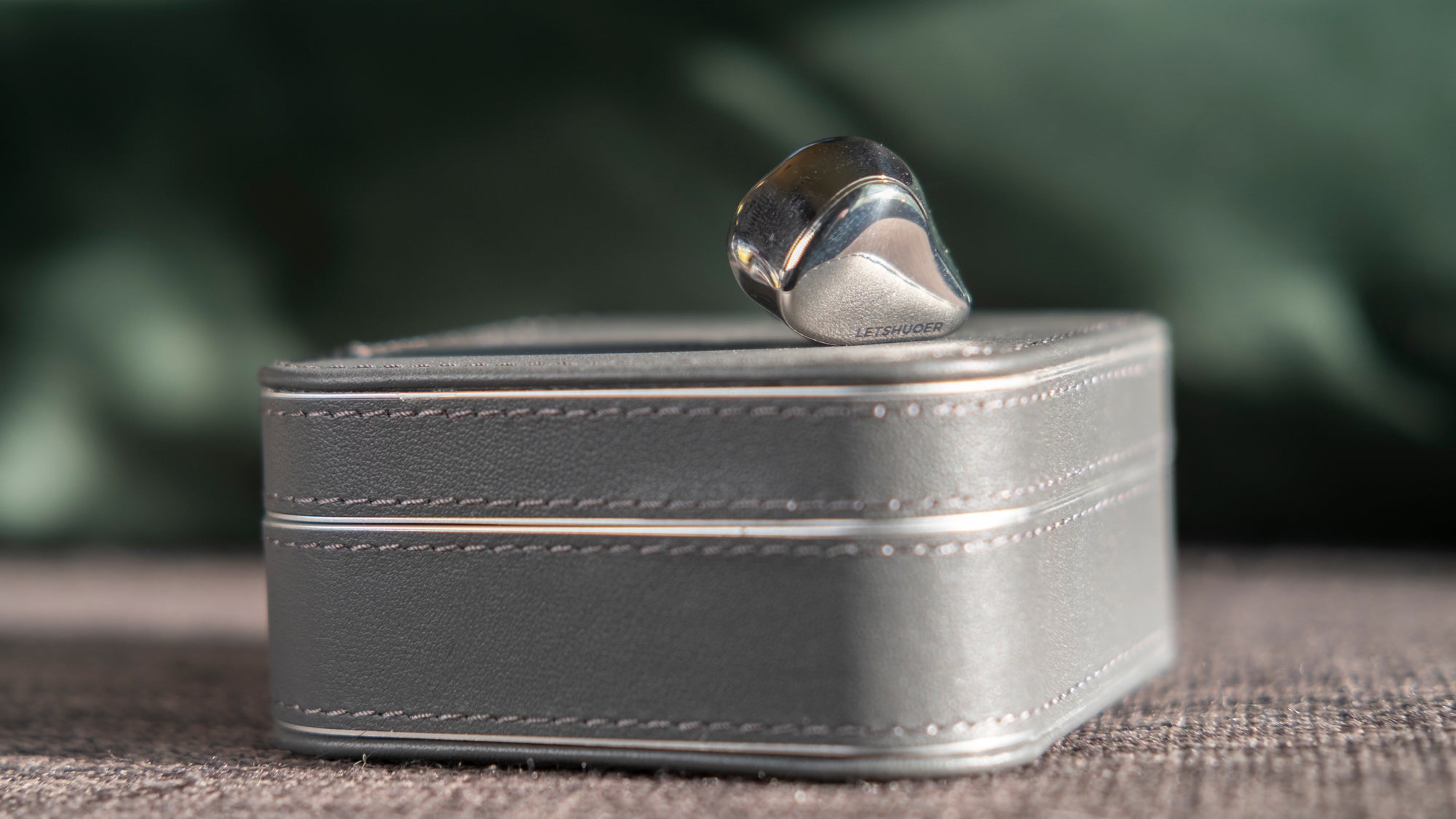
Unfortunately, it gets complicated: both human ears and headphones have acoustic impedances which vary by frequency, and as a result the interactions between these impedances is a major part of what defines the actual frequency response we hear.
On the ear’s side, the “acoustic input impedance”, or “ear load” is influenced by a lot of parameters, including the stiffness and mass of the eardrum, the ossicles (little bones inside your middle ear), and the geometry of the pinna (outer ear) and canal. These are quite varied between people, and even differ between the two ears of the same person.
On the headphone side, the “acoustic output impedance” can be influenced by the damping and construction of the driver baffle, the stiffness and mass of the moving diaphragm, the geometry, material, and dimensions of the earpads, and any acoustic resistances used as dampers in the system.
The simplest example of an impedance interaction that almost everyone has heard at some point is when a leak rolls off the bass of a headphone or IEM. A sealed air chamber is a very acoustically high impedance environment, so even a high impedance source (like a very small IEM driver) can generate a lot of sound pressure. But once there’s a leak to the outside—a change of the air chamber’s input impedance—this pressure can vanish, and thus the system loses bass.
A fun example of acoustic impedance at work is the difference in positional variation between the Sennheiser HD 800 S and the Drop HD 8XX. Many thanks to oratory1990 for supplying the data. The HD 800S is one of the most open, low acoustic impedance headphones around. The HD 8XX is almost entirely the same headphone as the HD 800 S, just with significantly more damping of the front volume.
We see below in Fig. 1 that the additional acoustic impedance (adding damping, therefore increasing the acoustic impedance of the leakage path) on an otherwise identical headphone is making the HD 8XX much more positionally-variant than the HD 800 S. A higher acoustic output impedance in this case means the source (headphone) will be more reactive to changes in acoustic input impedance (different positioning, different seal, different ears/heads).
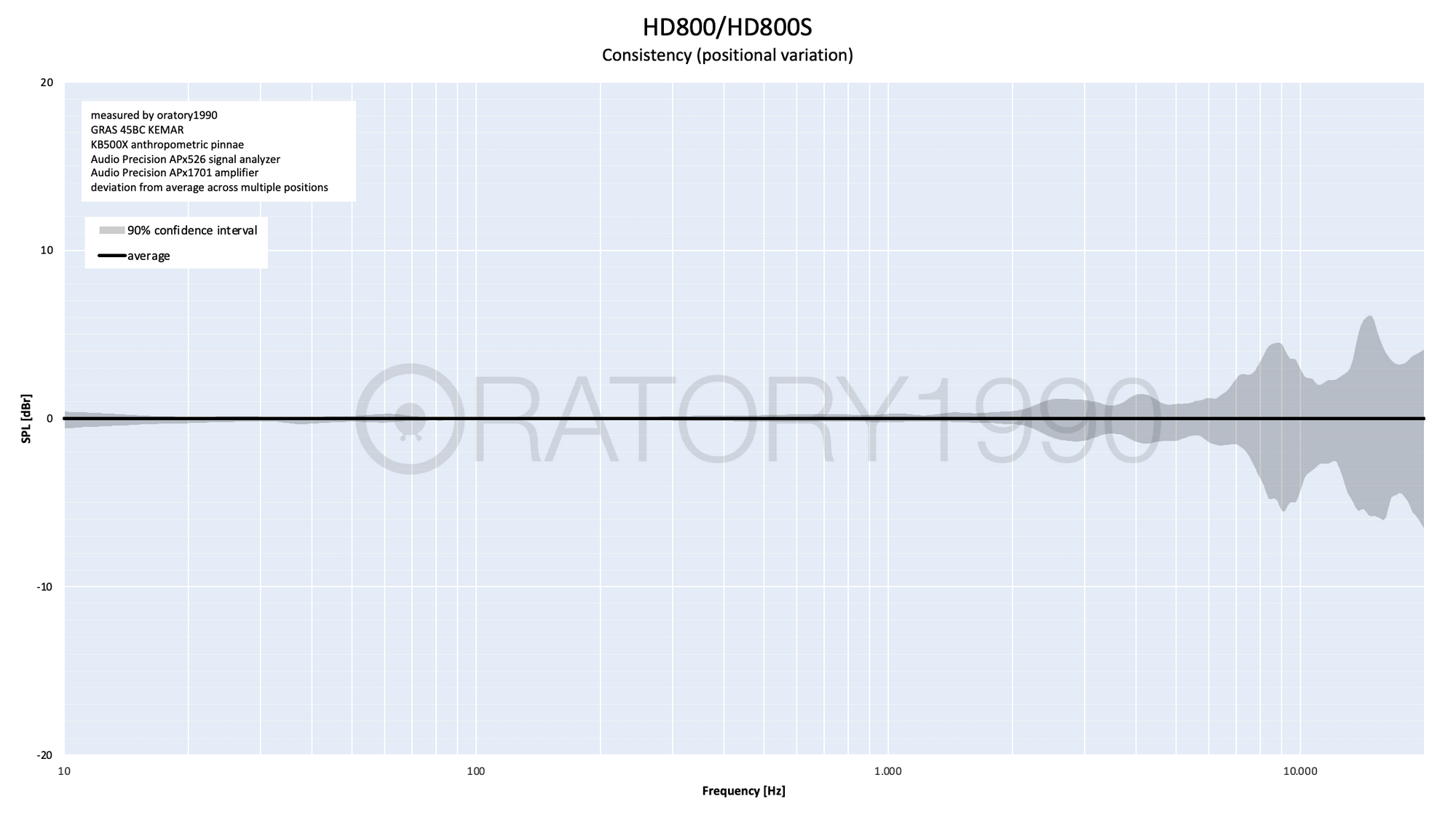
Fig. 1: Positional variance between the Sennheiser HD 800 S and Drop x Sennheiser HD 8XX
IEMs however share most of the traits of closed-back headphones. They are mostly able to be grouped into the “high acoustic output impedance” category, but with one more curveball: they are significantly closer to the eardrum than a closed back headphone.
Acoustic impedance interactions get more unpredictable the closer the sound source gets to the eardrum. This means that to properly and accurately measure IEMs—which are closest to the eardrum and mostly have a high acoustic output impedance—we require as human-like a simulation of the ear’s input impedance as possible.
This is why the B&K Type 5128 is an important development. It is the best simulated “ear load” we have, and models the acoustic input impedance of the average human ear better than anything else prior. This makes 5128 the clear best choice for measuring IEMs, in particular.
Unfortunately, while this is a boon to our understanding of how IEMs actually respond in a human ear, this development kind of reveals that IEM measurements done on 711 couplers are—at minimum—meaningfully less representative of a human ear than we may have thought prior.
How do 711 and 5128 Measurements Differ?
The ear simulator of the Type 5128 HATS is designated Type 4620, and it consists solely of the outer ear, canal, and “eardrum” at the end of the canal. This is all that is needed to measure IEMs, which is why Crinacle opted only to get one Type 4620 simulator and two pinnae, instead of a full Type 5128 (which includes—at minimum—a very expensive head). I reference the 4620 below as it is the relevant ear simulator for measuring IEMs on the Type 5128.
For those not yet used to IEM measurements on the new system, here are the cliffnotes on interpreting data from the 4620 vs. more ubiquitous 711 measurements:
- The 711 coupler can overestimate response below 1kHz on IEMs relative to humans, the 4620 measures below 1kHz with more human-like accuracy.
- The 4620 is rated for accuracy up to 20kHz, versus the 711 coupler’s rated accuracy of up to 8-10kHz.
- The 711 coupler’s entrance without a pinna is a circular metal opening, whereas the 4620’s canal entrance is terminated with an outer ear (pinna). As such, insertion depth for IEMs is going to be less consistent between measurements on 4620, as it’s limited by how the ergonomics of the IEM sit within the pinna. (I see this as a feature, not a bug).
- The 4620 has a larger overall canal volume vs. the 711 coupler. The added length of the 4620 canal vs 711 means that the 8kHz resonance we’re used to seeing on IEM measurements done with 711 may shift closer to 7kHz on 4620. This may result in additional energy around the periphery of this resonance as well (eg. slightly boosted upper mids/presence).
- Because of the soft silicone of the ear and canal, IEMs can “wiggle” in the 4620’s canal, producing wiggles in the frequency response in the bass and lower midrange. These “spring-mass” resonances have not (as far as I know) been confirmed to be present in real human ears.
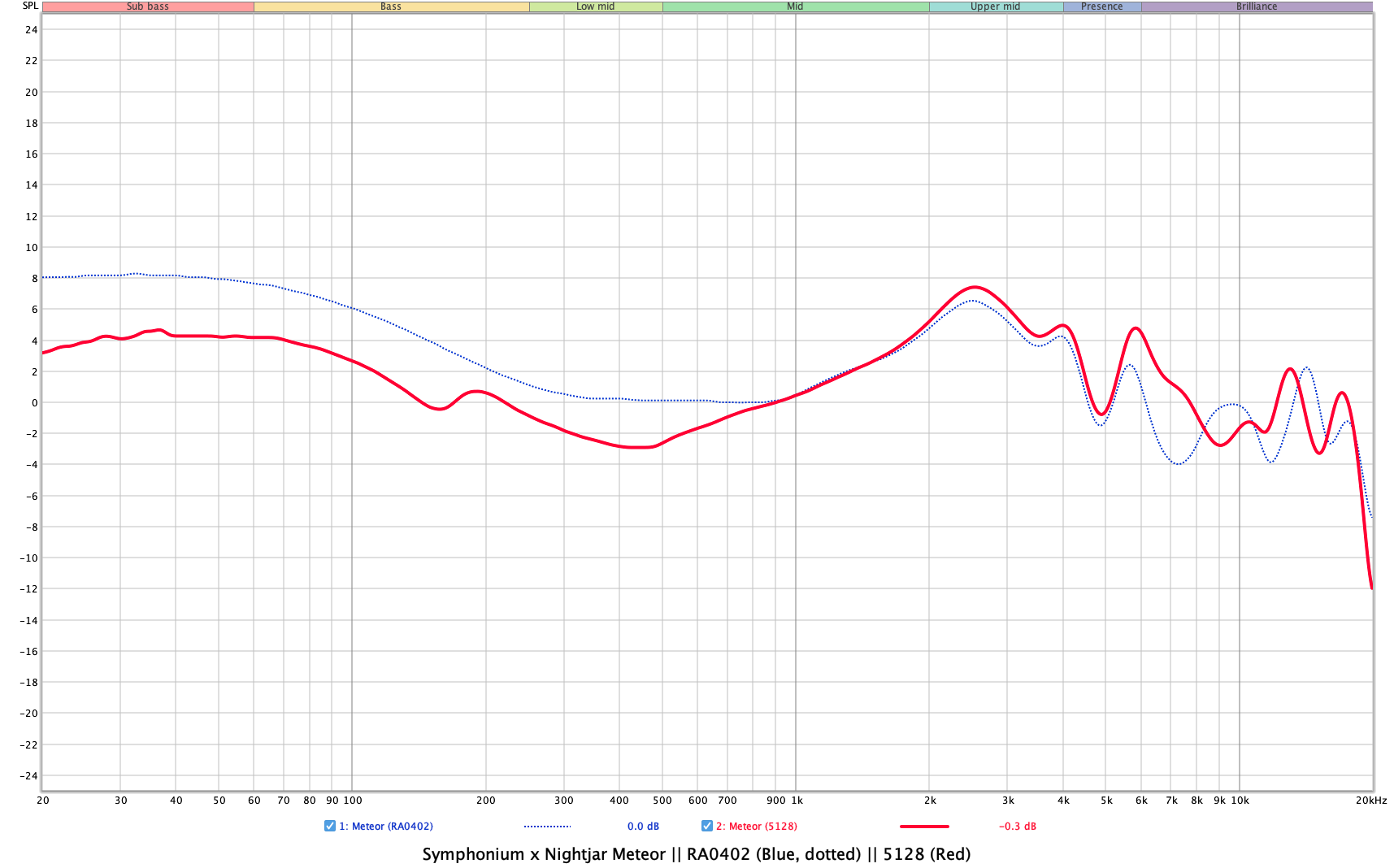
Fig. 2: Symphonium Meteor, measured on both the GRAS RA0402 (Blue) and Type 5128 (Red)
These differences in the aggregate are shown in the above graph, with Resolve’s measurements of the Symphonium Meteor on the GRAS RA0402 coupler in blue, as well as on the B&K Type 4620 in red. The subsequent image below shows the delta (difference) between them, showing how much loss there is below 1kHz when the Meteor is measured on the 5128 vs. the RA0402 coupler, among other things.

Fig. 3: Difference between the Symphonium Meteor measured on both the GRAS RA0402 and Type 5128 (Red)
We see that the 5128 measurement has less bass… but we also see that the “shape” of 711’s overestimation of response in red here isn't exactly an intuitive one to predict or correct. It’s easiest to describe this difference as “less bass,” however 711’s overestimation extends into the low-midrange as well. Above 1kHz we see that the upper mids are mostly in agreement, with the main difference being above 5kHz or so (likely mainly due to insert depth differences).
Symphonium Audio x NightJar Meteor In-Ear Headphones
IEMs vs. Headphones
In contrast to the 711 coupler, the Type 5128 is the only Head and Torso Simulator (HATS) where the “ear load” presented by the HATS to an IEM is comparably accurate to the ear load it presents to a headphone. This means the 5128 is the only measurement system so far where IEM frequency response measurements are comparable to headphone measurements using the same HATS… though the ideal baselines for IEMs in particular might be slightly different, which I’ll touch on later.
While the reference for headphone tuning has almost always been various takes on “capturing how people prefer speakers to sound,” this reference hasn’t really worked out for IEMs. Let’s talk about why.
What’s Wrong With Our Current IEM Targets?
Harman’s In-Ear Target(s)
I’m among those who count Harman’s research to be the most important body of work regarding listener preference in headphones. However, there are valid reasons to be concerned with the output of their IEM research. The most important are, to my mind:
- They did not account for the differences in acoustic impedance when a 711 coupler is presented with an IEM versus a headphone. This is a problem when a headphone target serves as the baseline for an IEM target—as is the case with the 2013 headphone target serving as the basis for the 2016 IEM target.
- Listeners in the initial 2016 IEM study were only able to adjust frequency and amplitude of bass shelf, not Q value.
- There was no ability to alter the upper midrange or treble response until a later study.
- Studies that led to further adjustments to the curve after 2016 were not published.
- The study had a limited sample size of participants (less than 20 people, per Sean Olive).
While the latter points are definitely an issue worth talking about—and are commonly cited by both Resolve and Crinacle—the first is the main reason I have qualms with Harman’s IEM targets, and see them as sonically incompatible with the rest of Harman’s OE research.
Not accounting for the difference in acoustic impedance between headphones and IEMs meant the headphone target used as a baseline for the IEM target sounded fundamentally different on headphones versus IEMs.
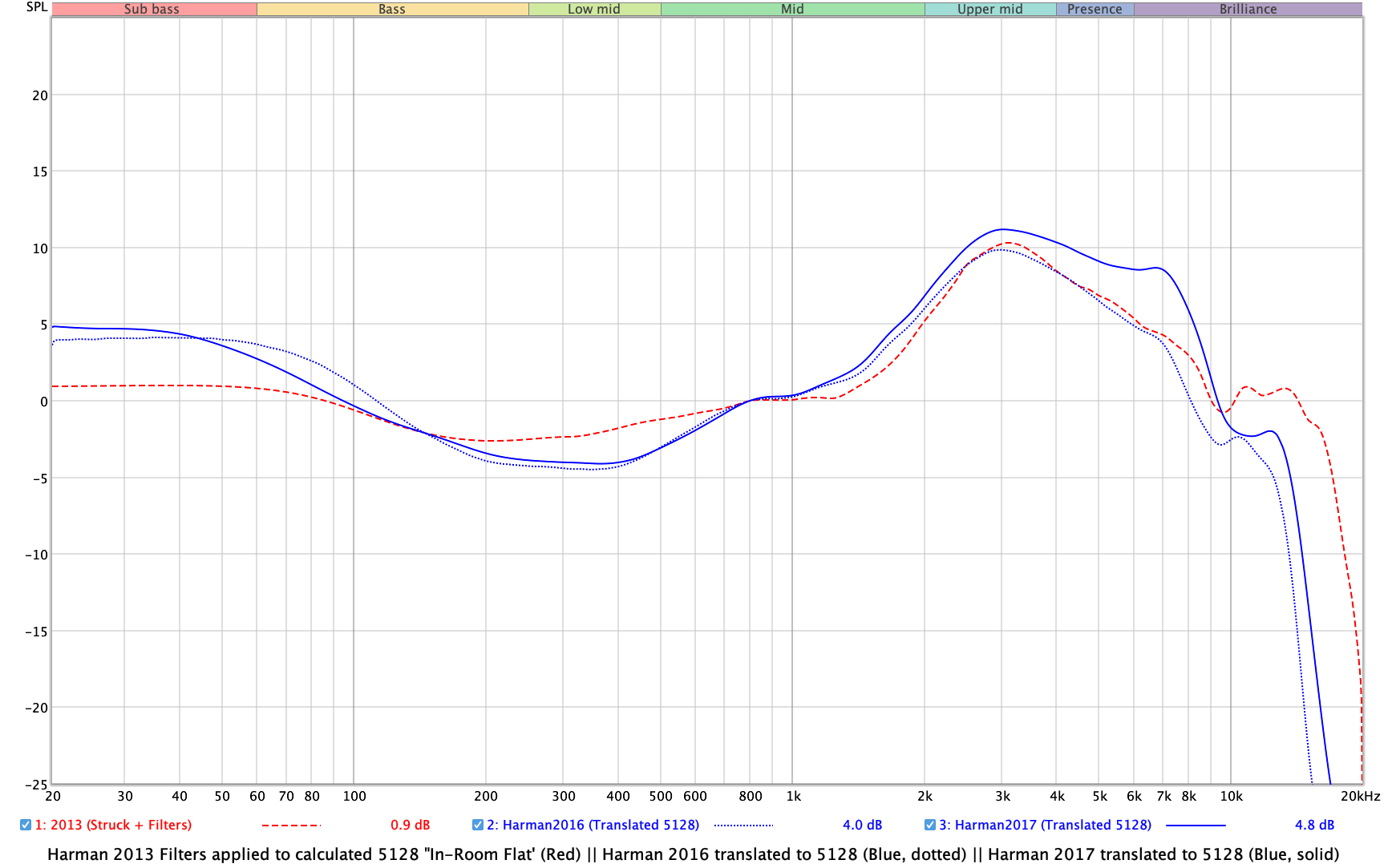
Fig. 4: Harman 2013 derived from Struck 2013 (Red), Harman 2016 and 2017 roughly derived from difference between 711 and 5128 on IEMs (Blue)
In the above graph is a (very) rough approximation of the sonic difference between Harman’s In-Ear Targets and their 2013 over-ear target. The 2016/2017 targets have around 2-3 dB less low midrange, and around 4dB more bass than the over-ear target. Once you consider the 2017 target—the one currently used in the form of “Harman 2019v2”—having more treble than either, it becomes quite clear that Harman’s current IEM target is meaningfully decorrelated from the sound of their headphone target(s).
The difference in preferred low-end response between Harman’s first IEM and headphone targets—roughly +4dB more in the bass for the former—could’ve been an effort on listeners’ part to correct 711’s overestimation of bass in IEMs. It may also have been an effort to balance the recessed lower-midrange with enough bass to bring back a sense of tactility, warmth, or fullness.
In a brief defense of Harman’s work here, it is worth saying that their IE target has shown rather robust correlation with listener preference. I think it’s important to be fair and mention that whatever ideas I have aren’t more scientifically sound than something that actually has listener preference data behind it.
However, for the reasons I’ve outlined above (as well as the other fair criticisms from Crinacle and Resolve) I consider these tests to be an outlier, prompting more tests. While the B&K 5128 serves as an exciting baseline to base future preference research on, it must be said very clearly that no comparable body of preference research exists for the 5128 yet. It’s entirely likely that Crinacle, Resolve and I could be wrong, and people do actually overwhelmingly prefer the less lower-midrange and more treble of Harman’s current IE target.
That being said, until listening tests are redone from a circumstance where the pre-adjustment headphone and IEM baselines do actually sound the same, I will continue to personally regard any of Harman’s IEM targets as having nowhere near the same level of reliability as their headphone targets.
IEF Neutral 2020 & Reviewer Targets
Each reviewer having their own target response isn’t necessarily a bad thing. I’d actually say it’s a good thing for a reviewer to be able to efficiently communicate what kind of tonal balance they generally prefer… as long as it’s all relative to a common human-like baseline.
The problem we have now is that most reviewer targets are not relative to a common human-like baseline. Most are just a target that a reviewer drew themselves, tested with a few EQed IEMs, and found to work well for them. Some reviewers’ targets are just an IEM they like.
Crinacle’s IEF Neutral 2020 target is the most well-known example of the “drawn” reviewer target. I’ve (very) roughly translated it to 5128 here and placed it against our 5128 Diffuse Field baseline downsloped by -0.8dB/octave for comparison.
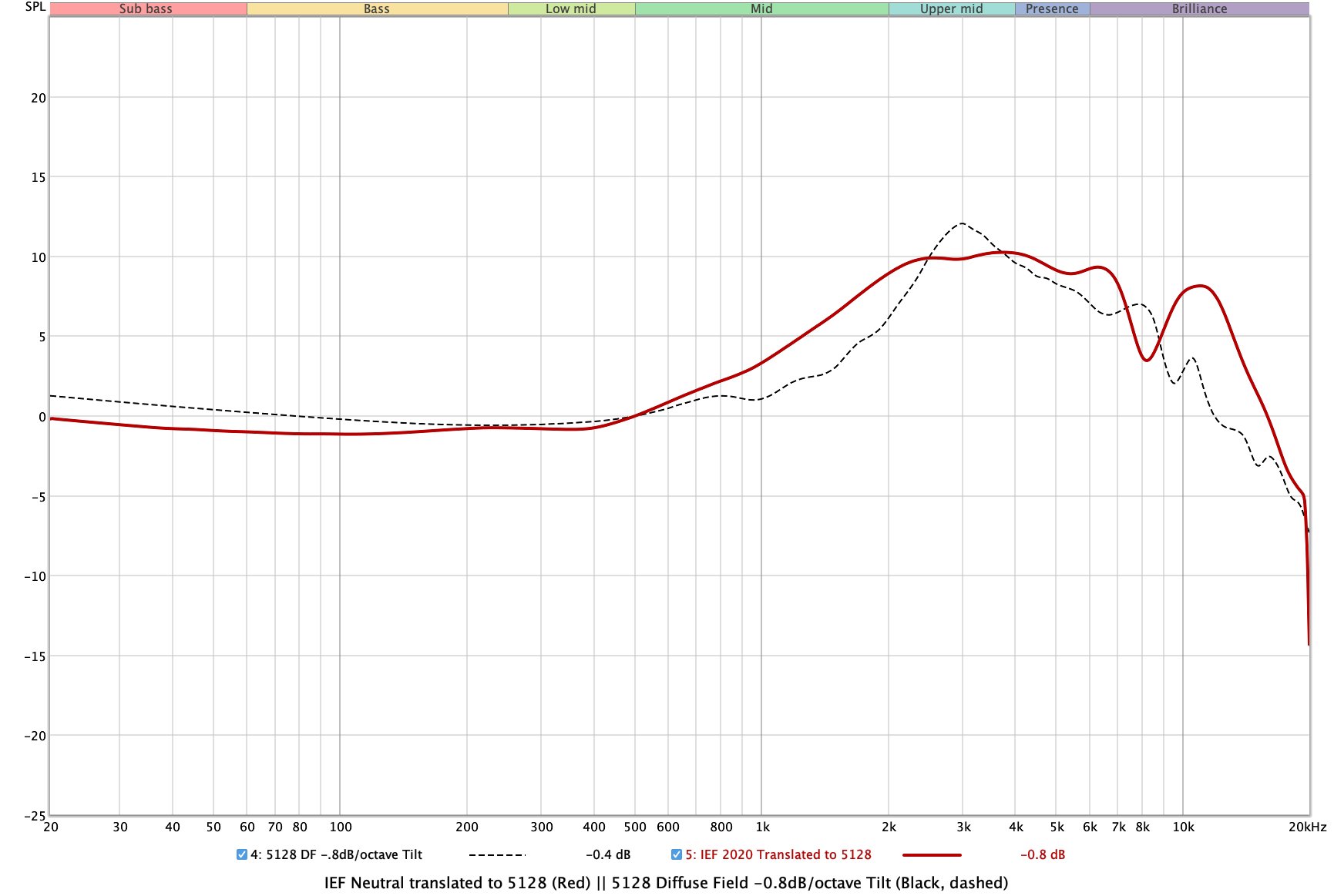
Fig. 5: IEF Neutral 2020 roughly translated to 5128 (Red), 5128 Diffuse Field -.8dB/octave Tilt (Black)
This comparison shows us some of the pitfalls of not using a common human-like baseline for a target. I’ve never seen any properly measured and averaged Head-Related Transfer Function (HRTF) have the wideband elevation IEF 2020 seemingly has at 1-2 kHz, and to me this elevation is this target’s main weakness. It makes IEMs sound somewhat small, intimate and often shouty. Importantly, it limits how loud I can listen without fatigue.
Since we know 711 overestimates response under 1kHz, the “flat under 1 kHz” nature of the IEF’s 2020 target is also now revealed to be not actually flat under 1 kHz at a human-like eardrum. Even though Crinacle ostensibly left this region “flat” so people could add their own bass shelf, 5128 reveals that IEF Neutral 2020 is actually counter-clockwise sloping under 3kHz until about 200 Hz.
While this is easily the most popular IEM target next to Harman, it may not offer a meaningfully better alternative. With these two—Harman and IEF—it’s my view that we are still without an IEM target that doesn’t have serious methodological problems. Both are meaningfully incongruent to what Harman’s seminal over-ear headphone research tells us is the sound we prefer from headphones or speakers.
Since the targets themselves as well as the measurement hardware both have significant faults, the analysis of IEMs against these targets has largely been a confusing conversation, one often dominated by faulty premises.
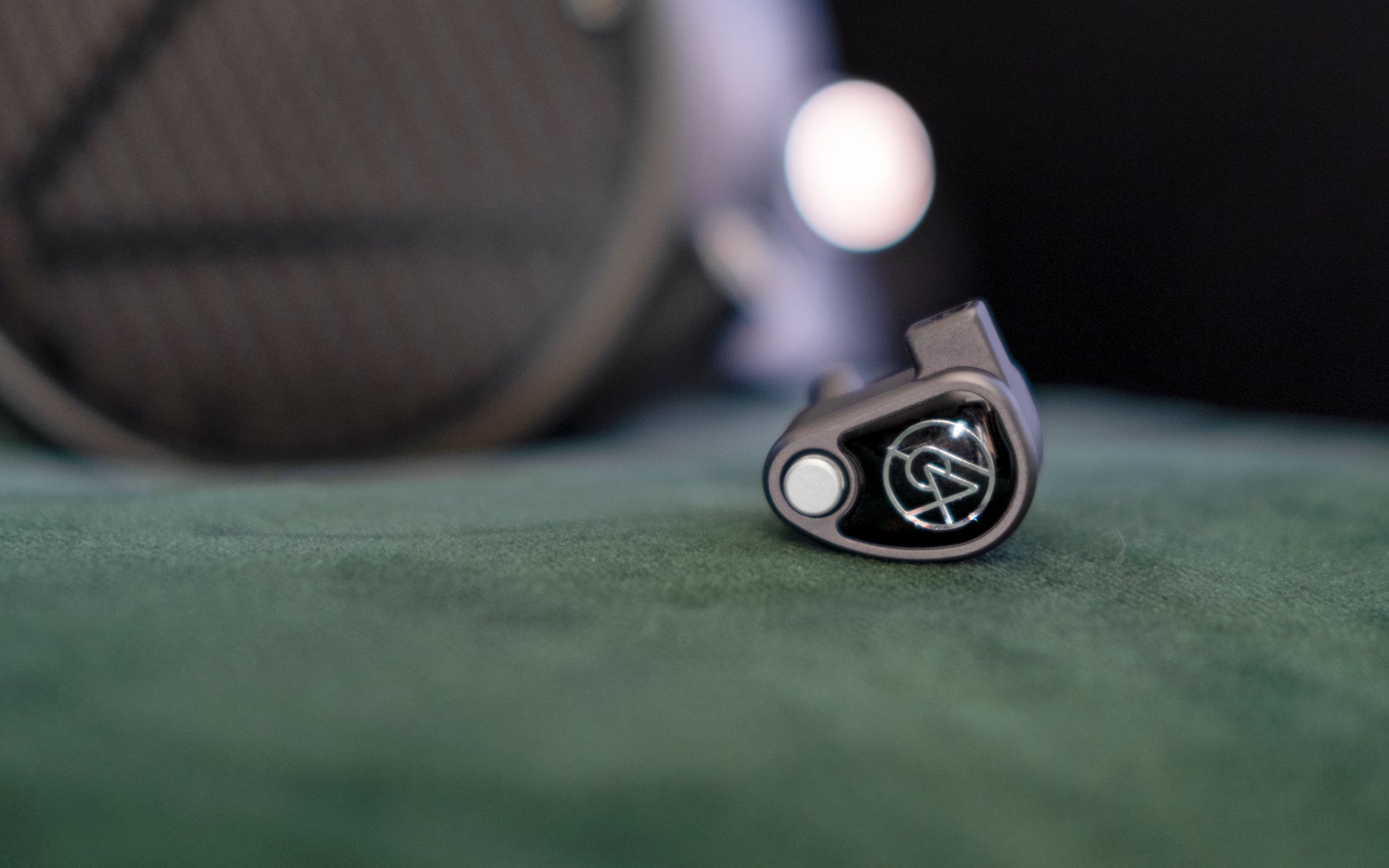
711-Based Axioms Worth Correcting
I think our discourse is potentially held back by some inaccurate terms that are almost entirely built on flaws of the 711 system and its associated targets. I’d like to address some of these here, and why I think they perhaps shouldn’t be entertained as we move forward in our understanding of how IEMs and the systems we use to measure them actually work.
“Treble extension”
We’ve historically aligned IEMs measured on 711 couplers to have a length mode resonance at 8kHz, and this was for a few reasons. 8kHz being the limit of where the 711 is generally rated for accuracy means that shooting for this resonance maximizes the usable range of the coupler. Additionally, standardizing this peak means that all IEMs that have this length mode are inserted similarly deeply, and are therefore measured in comparable circumstances.
The problem with that is that not all IEMs actually sit at this distance from the eardrum when placed in a human-like ear (5128). As we can see from Fig. 6 below, many have been shown to shift the length mode resonance downward to 7kHz.
So it will operate on a case by case basis, but because we standardize the length mode (8kHz resonance) to something that isn’t necessarily correlated to the length of the average human canal, analyzing treble measurements with 711 couplers has always been a rocky road.
Simply put, very few IEMs actually have meaningful issues with full extension out to the last half-octave of the treble response (above which, there is very little information anyway). I’d go as far as saying the issue might even be the opposite, and IEMs may have too much treble compared to headphones or speakers, not the other way around.
Historically, the term “treble extension” in our community hasn’t even always been used to describe extension all the way out to 20kHz! In fact, it quite often describes an IEM doing so without major dips before reaching the last half-octave of the frequency response. For example, If you’re used to reading IEMs measured on 711, the measurement below of the Salnotes Dioko is a good example of one that looks like it would have smooth treble response.
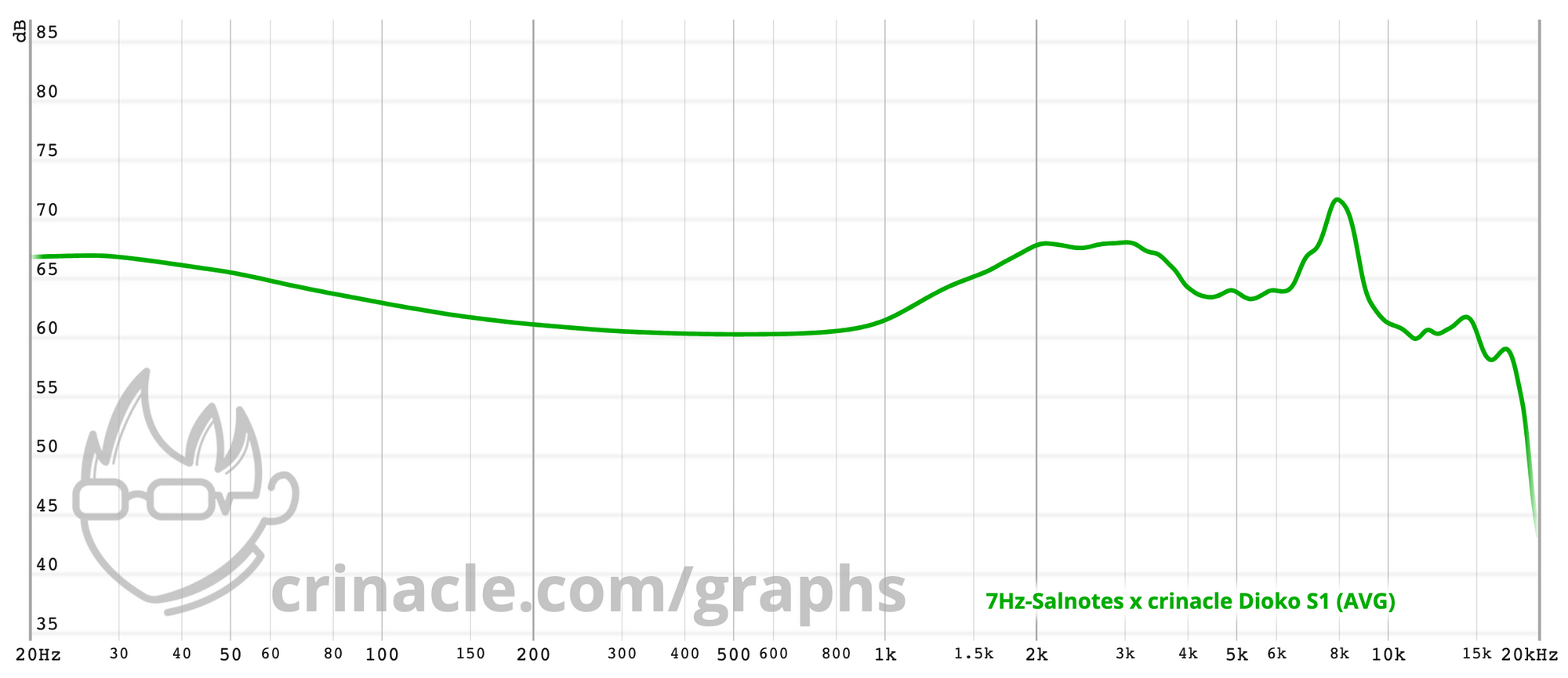
Salnotes Dioko as measured on Crinacle’s 711 coupler
The problem is that 711 measurements of IEMs likely should have a large dip in response above 8kHz, as above this point even manufacturers of 711 couplers agree that we shouldn’t expect a linear response (or correlation to an average human).
Every time I’ve EQed an IEM to the new Diffuse Field reference point on the 5128, it becomes clear that every 711 coupler I’ve looked at has a depression around 10-14kHz that masks the fact that many IEMs have a peak there on 5128 (as well as ostensibly on listeners with a similar ear canal profile/length).
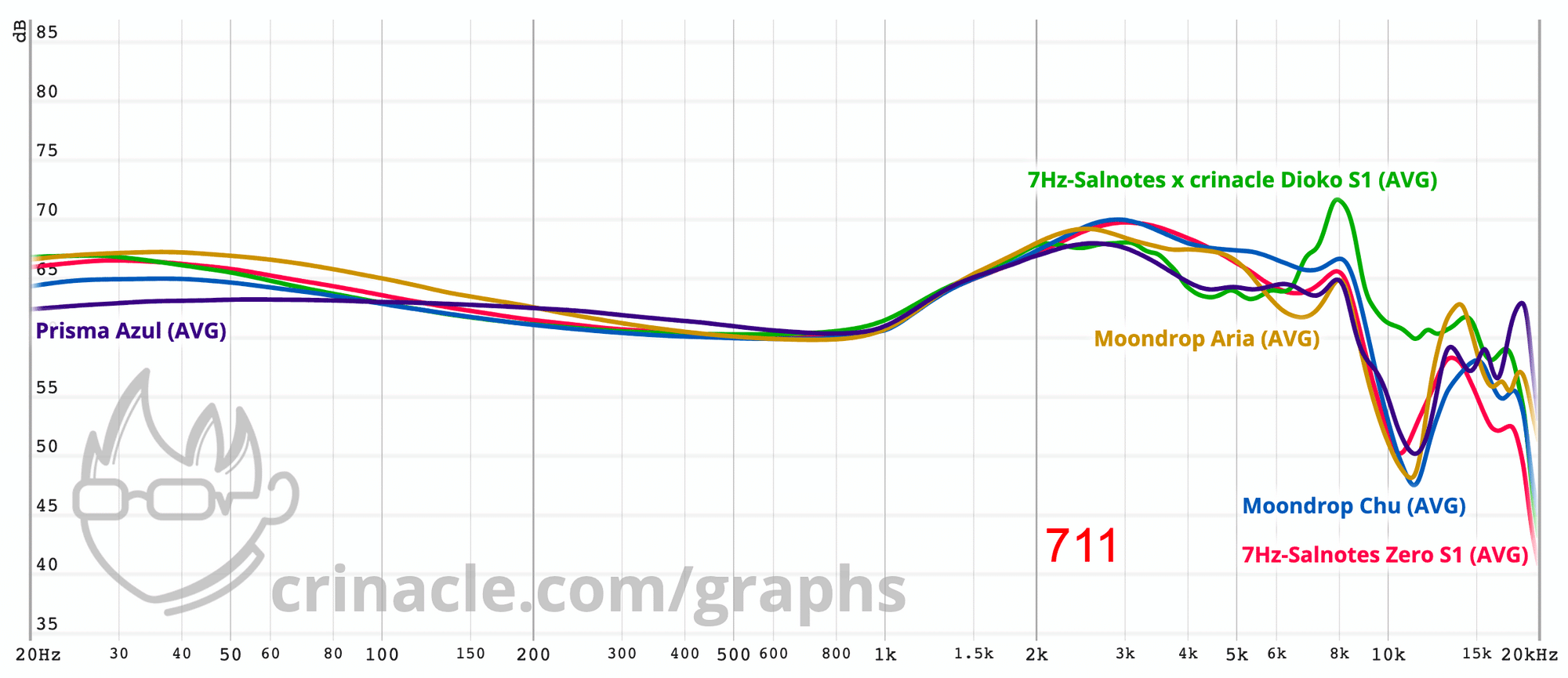 Fig. 6: The difference in length mode resonance peak between 5128 and 711; 8kHz peak gets shifted downwards to ~7kHz on many IEMs on 5128
Fig. 6: The difference in length mode resonance peak between 5128 and 711; 8kHz peak gets shifted downwards to ~7kHz on many IEMs on 5128
The above measurements in Fig. 6 show that the longer canal of the Type 4620 can shift these peaks (and dips) downward in frequency, but it’s important to note not all IEMs have this behavior. While some IEMs—an example being Crinacle’s Truthear Zero: RED—still have the 8kHz resonance in the exact same spot when placed in a Type 4620, I’ve found it much less common. And even in these cases, it’s clear the 711 coupler is engendering a null around 10-12kHz vs the 5128. While certainly there are people out there who have sonic complaints with IEMs not having enough treble in one respect or another (which is totally valid as a preference), I think it’s probably time to stop framing an issue of underemphasis as an issue of lacking “extension”.
They’re two entirely different issues, and now that we have a better hearing simulator, we know that extension likely isn’t as big a problem as, for example, treble of some IEMs being prone to dipping and peaking rather more dramatically than headphones above 8kHz. Standardizing for an unhuman-like insertion depth (instead of measuring with a pinna that would simulate realistic insert depth) compounded this issue and led to us seeing features that simply aren’t really there in many people’s ears much of the time.
“BA Bass”
This is the one I actually believed for a while, as my first real IEM was an Etymotic ER4p, which had particularly unsatisfying bass.
However, Crinacle had a great theory about what might be behind low quality “BA Bass,” and full credit to him for bringing this excellent example to light.
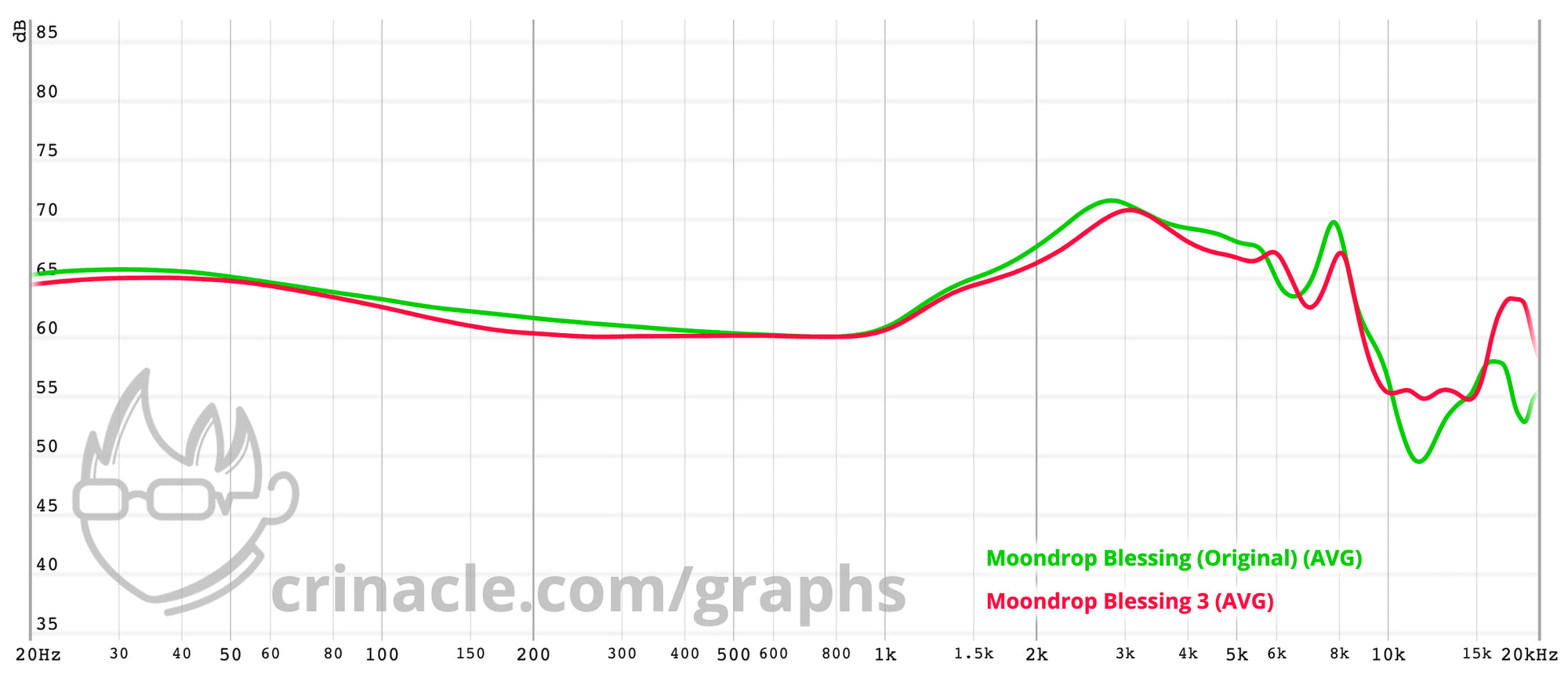
Fig. 7: Moondrop Blessing vs Blessing 3 measured on Crinacle’s 711 coupler
If one looks at two IEMs that measure similarly on 711, like the original Moondrop Blessing and Moondrop Blessing 3, we see that they are mostly in agreement under 1kHz. However, when you measure them both on a system with more accurate acoustic input impedance like the Type 4620, the differences between the two IEMs become clear.

Fig. 8: Moondrop Blessing vs Blessing 3 measured on the B&K Type 5128.
What we see here is likely more accurate to how the two compare, with the original Blessing having significantly less bass than the Blessing 3 when presented with a more accurate ear load.
And if we compare an IEM with balanced armature bass—say the Meteor—with one that has dynamic driver bass like the Blessing 3…
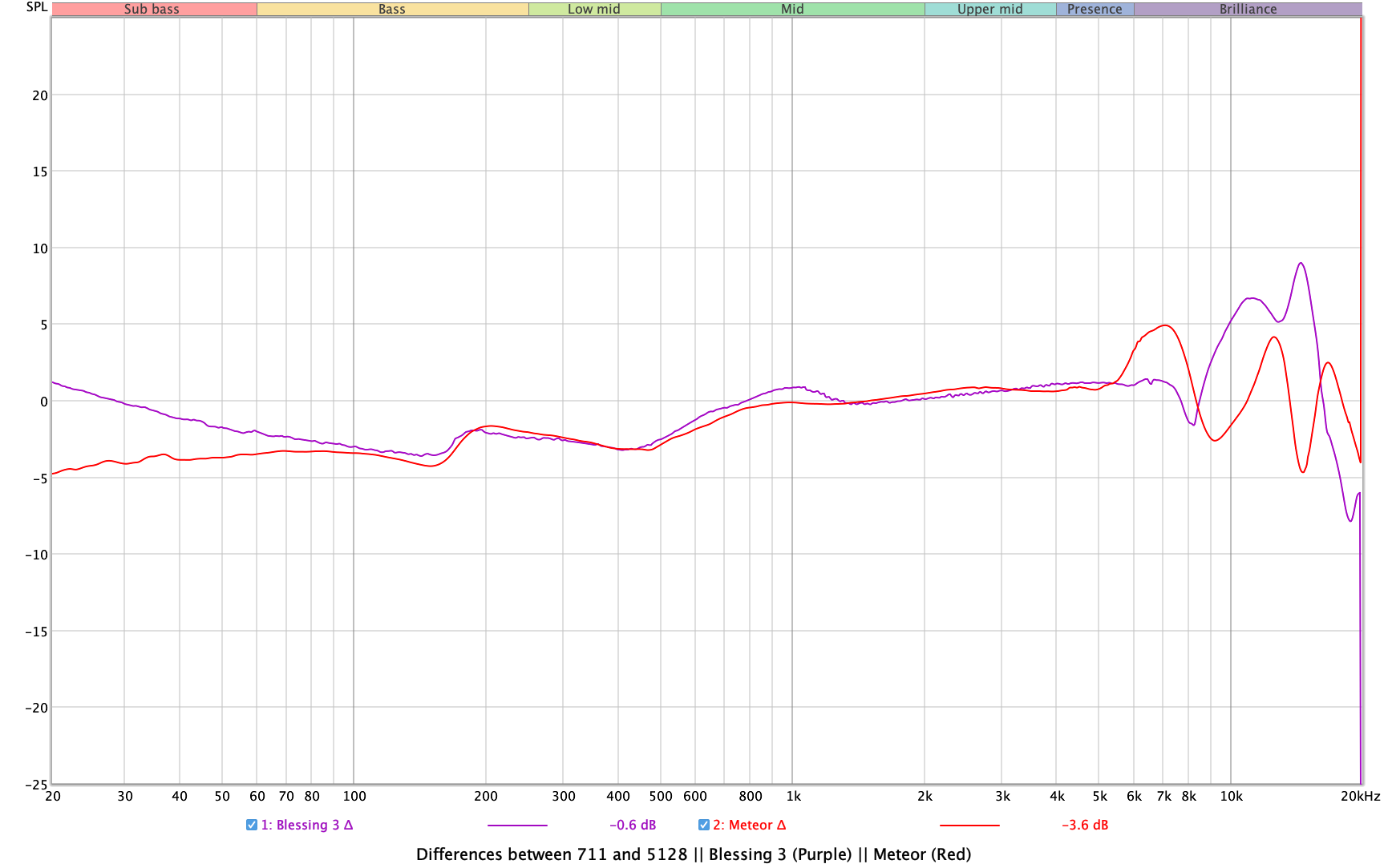
Fig. 9: The difference between Moondrop Blessing 3 vs Symphonium Meteor measured on the GRAS RA0402 vs the B&K Type 5128
We can see that the Meteor (which only contains balanced armatures) loses much more sub-bass when measured on 5128 than the Blessing 3. This confirms a core benefit of the 5128 to me: More accurate acoustic input impedance means the differences between IEMs will be displayed more accurately, and thus our impressions may end up more congruent to measurements than they have prior.
BAs are more leak intolerant than DDs and have a higher acoustic output impedance. As such, BAs may indeed have less bass in a human ear than a 711 coupler, compared to another IEM that has a dynamic driver. However, given the Blessing vs Blessing 3 comparison, it’s clearly not a phenomenon solely relegated to balanced armatures.
“Bleeding Into the Mids”
This phrase has been pretty common in the last few years when analyzing the shape of a bass elevation on IEMs. Bass shelves that flatten out around 200 Hz or earlier are often considered well-controlled (and therefore good) while ones that creep further into the midrange may be considered “muddy” at a glance.
The problem is—depending on how you normalize—IEMs have had a hole in the low-midrange for quite some time now. I would even say it’s possible this hole is only here because of the prevalence of this axiom. In fact, most of the IEMs gathered and measured by Harman for their first IEM study showed significantly more low midrange compared to their first target. We didn’t start to see the now ubiquitous “bass tuck” until after this research was published.
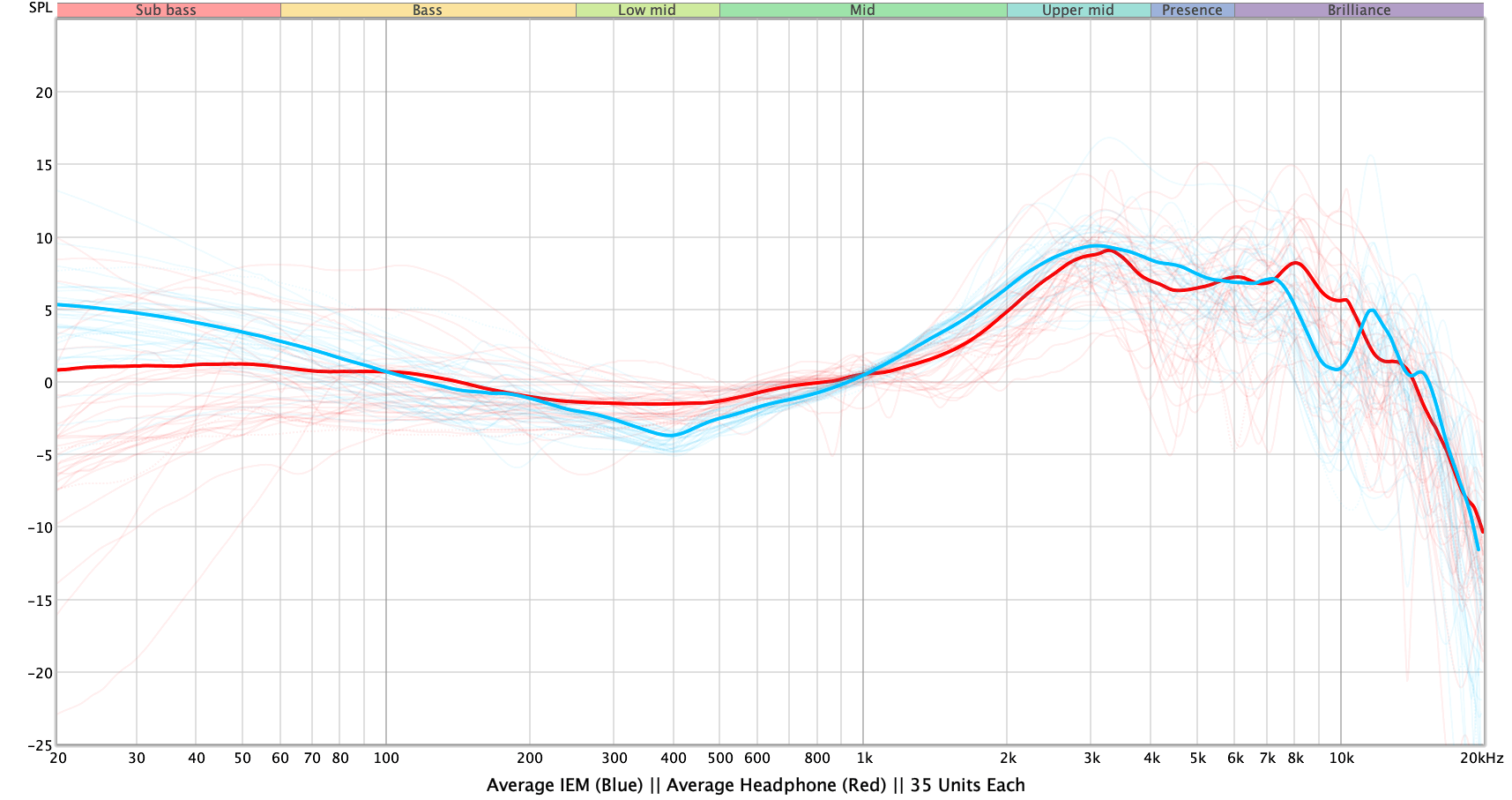
Fig. 10: Difference between the “average headphone” (Red) and “average” IEM (Blue) as measured on the B&K Type 5128. 35 units each.
This again depends on where you normalize the comparison, as it can either be seen as a deficit in lower-midrange, or an excess of upper midrange. However, the fact remains that IEMs are more counter-clockwise tilted in the midrange than we may have thought previously, many being more emphasized in upper midrange (1-2kHz) than even the Diffuse Field target.
So leaving the negative connotations surrounding bass “bleeding” into the mids in the past could serve us well as we acclimate to the new system. Filling this hole might even be the ticket to helping many IEMs sound more like headphones.
Where Are 711 IEM Targets Headed?
The Diffuse Field HRTF: Everywhere and Nowhere
The Diffuse Field HRTF (DF HRTF) is the best answer for a headphone target baseline for a few reasons. To get into why, we should first talk about speakers.
Speakers are devices of out-of-head localization. They are physical sound sources that create sound pressure in a room that interacts with your anatomy at a specific angle and elevation. These interactions produce “localization cues,” which are frequency response and timing differences at and between your two ears that give a cue that something is coming from a certain location.
If you’re in a normal listening environment and either you turn your head or a sound source moves, the frequency response at your eardrum changes dramatically. However, we generally don’t hear these changes as a huge change in tonal coloration, even though they significantly alter frequency response.
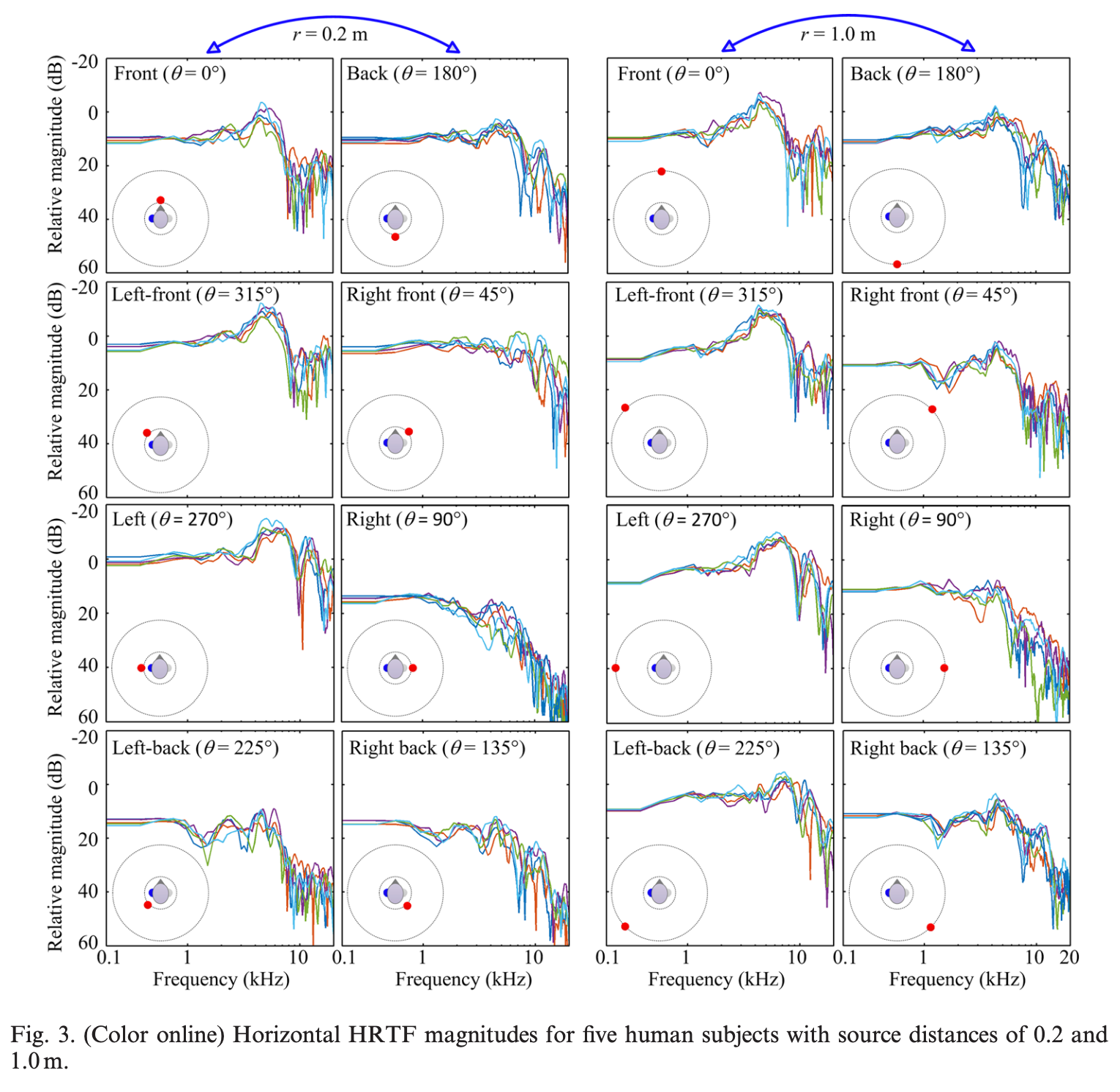
Fig. 11: The differences that arise in frequency response at the left ear of 5 human subjects as the sound source’s angle of incidence shifts relative to the listener
Instead, our brain is constantly subtracting these massive frequency response changes from our perception of sounds in the world. This leaves us mostly with the impression of localization changing, not tone.
If you were in a perfect Diffuse Field, however—where sound from a flat-measuring sound source arrives equally from all directions—turning your head wouldn’t change frequency response at the eardrum at all. You’d be in a somewhat strange psychoacoustic circumstance where you receive the same sound at any angle or elevation, therefore making the sound unlocalizable, seeming to come from either everywhere… or from nowhere.
Headphones and IEMs are devices of in-head localization. With headphones and IEMs, there are no sound sources in the room. The angle and elevation of the sound source is constant and moves with you, so when you turn your head, the frequency response at the eardrum does not change at all. Sound familiar?
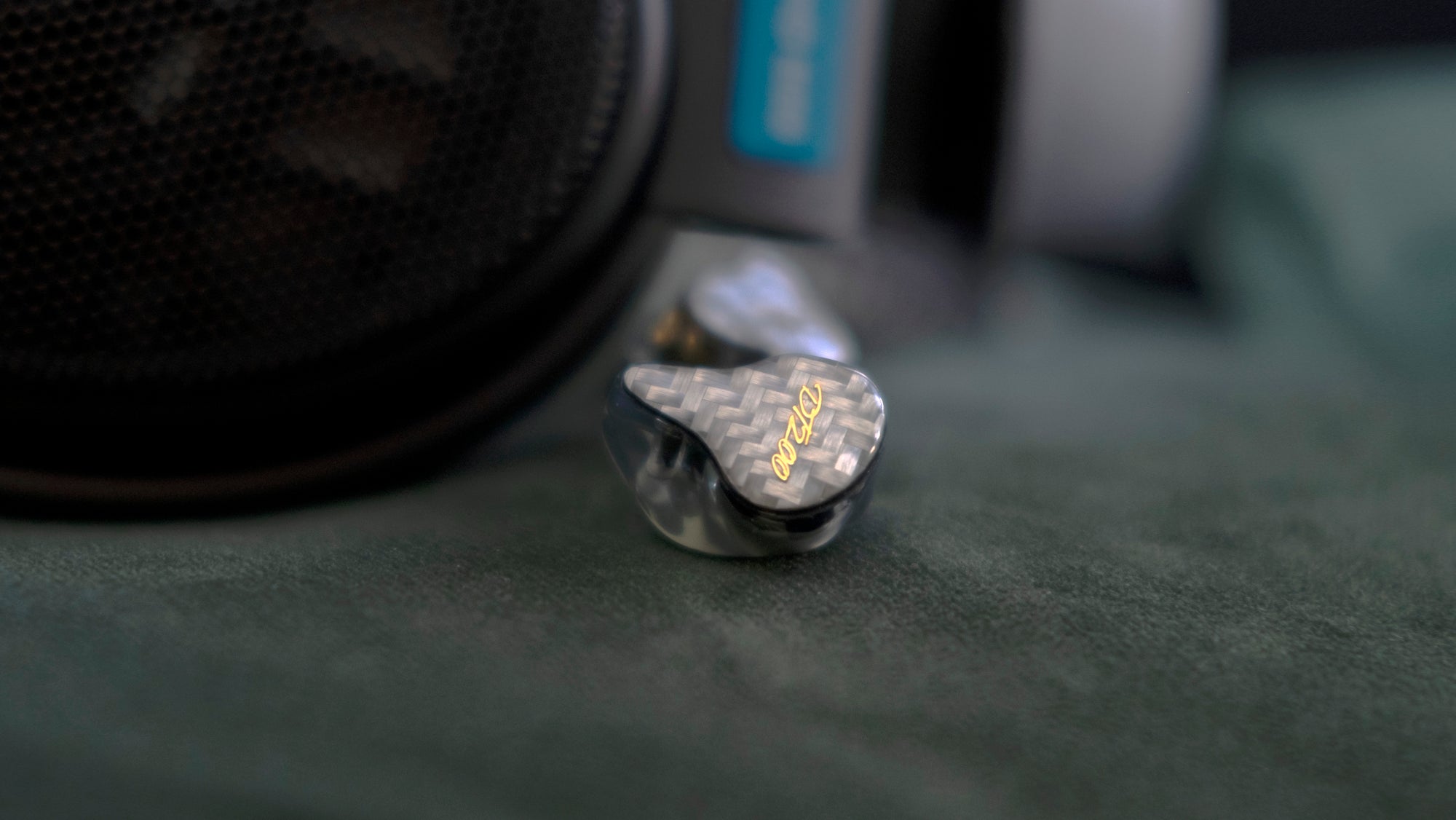
With his paper On the Standardization of High-Quality Studio Headphones (Theile 1986), Günther Theile put forth the idea that, due to headphones being devices of in-head localization, any difference in a headphone’s frequency response will be heard as a tonal coloration, not a localization cue. Therefore the DF HRTF—which is bereft of localization cues—is the only HRTF that would not add perceived coloration resulting from localization cues influencing frequency response.
While we know thanks to Harman that Diffuse Field isn’t preferred on its own, we also know roughly what corrections people prefer to a “flat-measuring speaker,” as well as headphones. That’s what underpinned Harman altering their “In Room Flat” measurement to give us the initial 2013 OE headphone target, after all.
We (Headphones.com, as well as Crinacle and others) are simply utilizing the DF HRTF as a more “psychoacoustically headphone-relevant” flat-speaker measurement instead of Harman’s In Room Flat measurement. We are—similarly though not identically to Harman—tilting the response downward to make it more preferential to the average listener. This applies to headphones as well as IEMs measured on 5128, though due to its incorrect acoustic impedance, 711 may require a different approach for similar results.
Targets Influenced By 5128
IEF Neutral 2023
Not long after Crinacle started uploading 5128 IEM measurements to his (now closed) Google Drive, I realized that most IEMs are not adherent at all to the “tilted Diffuse Field” target. Most of the products developed in the last few years have a similar dramatic slope upward from 400 Hz to 2kHz when measured on 5128.
I was compelled to see if this information could be applied to create a 711 target that more closely resembles the sound of the 5128 target. My aim was not to create a 1:1 stand-in for the data from the 5128, but rather to simply capture what a similar sounding target may look like on 711. I took 50 of Crinacle’s 5128 IEM measurements, EQed them to my preferred tilt of the 5128 Diffuse Field target, and then applied those same EQ changes to the 711 measurements of the same unit. Averaged out the results were… weird looking.
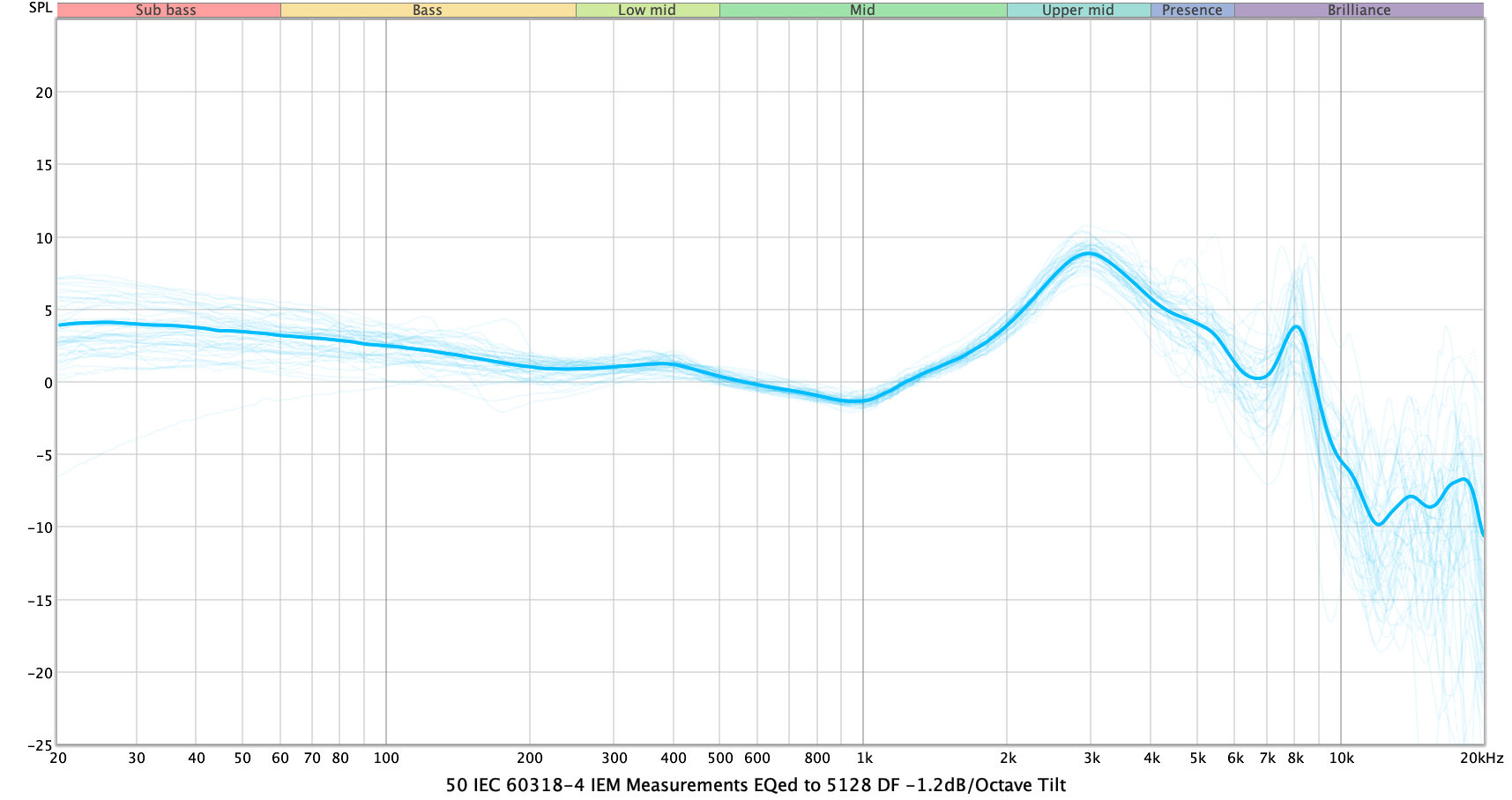
Fig. 12: 50 IEMs measured on Crinacle’s 711 coupler, after having EQ applied from the same IEMs’ 5128 measurements to the preference-tilted 5128 Diffuse Field reference point.
However, when I actually tried using the output of this analysis as a target for IEMs measured on 711, it worked really well. The midrange became more headphone-like, and imaging got much less oppressively close and small.
Of course there were caveats to that. Most 711 measurements scattered around aren’t super useful for EQ above 4-5kHz, due to them being inserted at a somewhat non-average insert depth. That’s not even mentioning how the variance swings on the clone IEC 711 couplers most enthusiasts use is often embarrassingly wide.
However, if the problems with most 711 targets are not being based on a human-like HRTF, not compensating for 711’s acoustic impedance issues, and not being based on preference research… using this data we could make a target that addresses all of these things. And that’s exactly what Crin did.
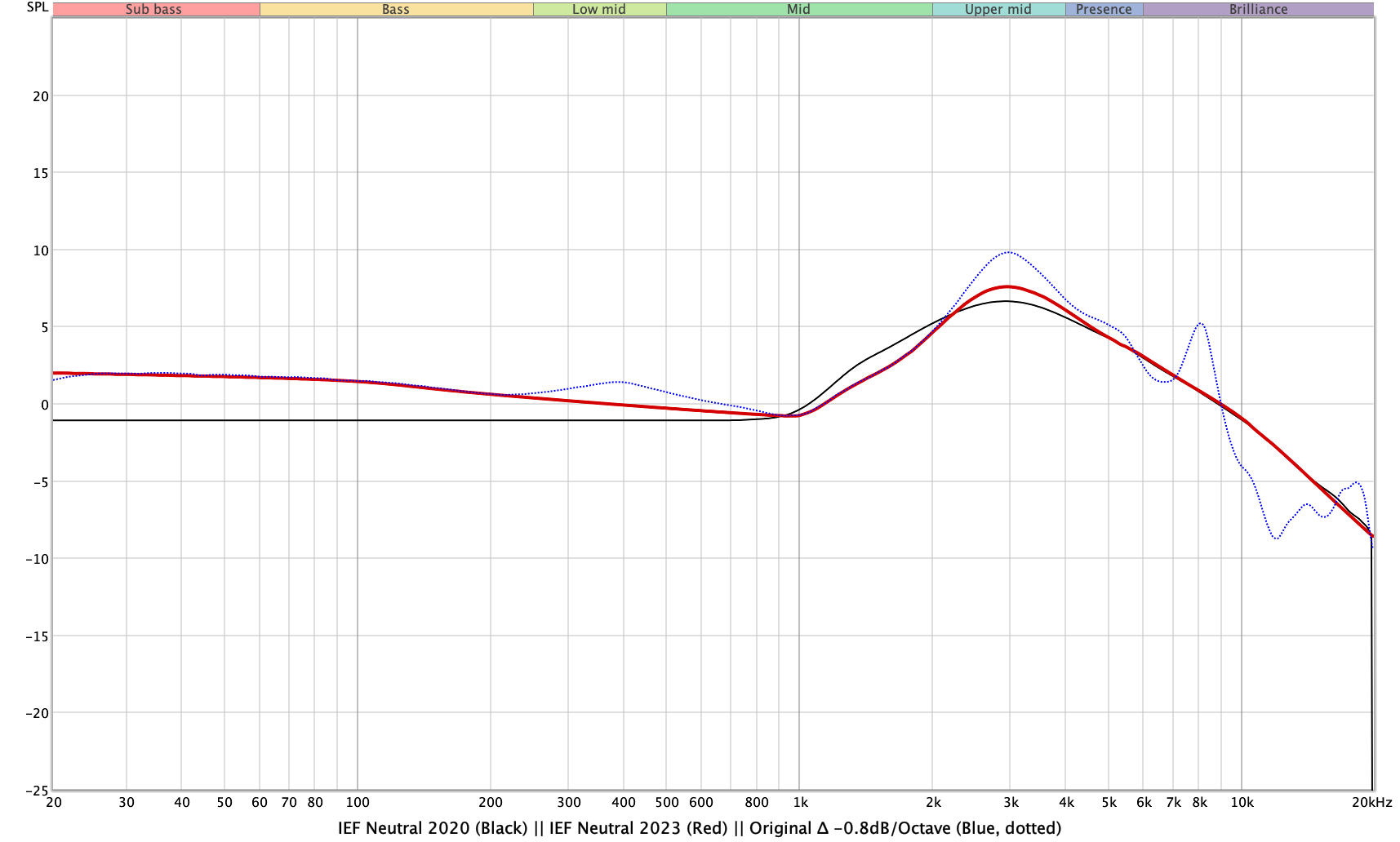
Fig. 13: IEF Neutral 2020 (Black) vs the new IEF Neutral 2023 (Red), as well as the original -0.8dB/octave Tilted ∆ Target (Blue)
He took the analysis I did above, smoothed a few features, and set it for a -0.8dB/octave tilt. Suddenly IEF Neutral 2023—the first of what I call delta (∆) targets—was born. While it shouldn’t be taken as a stand-in for proper 5128 data, it’s much better than having two separate databases with completely different sounding default targets, and certainly better than the prior targets which didn’t account for 711’s incorrect acoustic input impedance or use a human-like HRTF.
Now Crin has a target made specifically for his coupler, that is based on his preferred sonic adjustment of the 5128 DF HRTF!
Great… but what about everyone else?
Delta (∆) Targets
After airing all of that information regarding the methodological and sonic woes of Harman and reviewer targets, it should surprise absolutely no one that I took the above data and started making coupler-specific versions of the ∆ target for as many IEM databases as I possibly could.
Headphones.com neither supported this endeavor, nor even really had knowledge of it occurring. I want to be clear that I acted alone, in the interest of keeping 711 relevant and at least somewhat comparable to the measurements being released from the 5128. Because I don’t want people thinking this effort was endorsed by Headphones.com’s technical team, I will reiterate: this was all me.
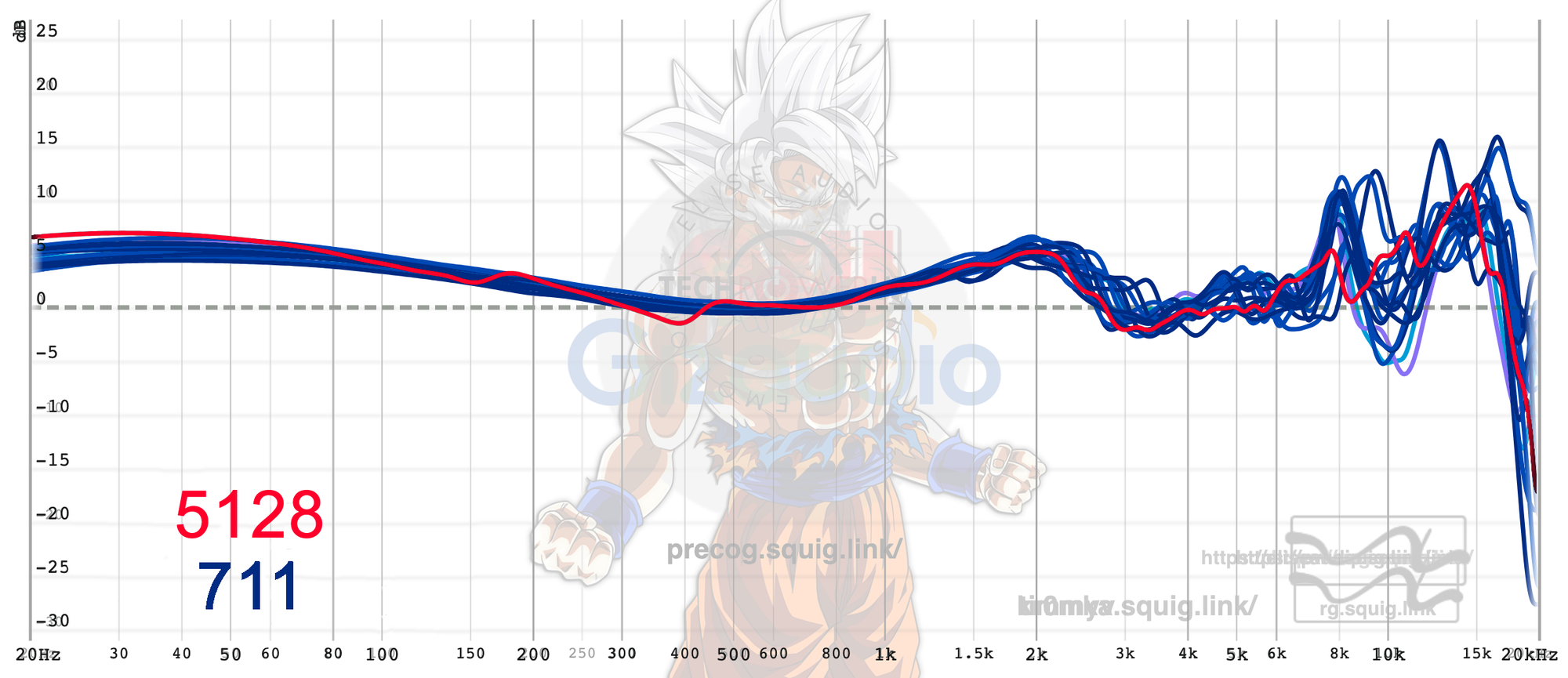
Fig. 14 is the 7Hz Timeless, measured on a cluster of squig.link sites that use clone 711 couplers. Each measurement is compensated to each database’s coupler-specific ∆ target, tilted by -1dB/octave. Red is the same IEM measured on 5128, compensated to the 5128 DF HRTF tilted by the same -1dB/octave slope.
The ∆ targets are neither perfect translations of the sound of 5128’s DF HRTF, nor fruit borne of a scientifically-rigorous process. Quite simply, you cannot simply make a 1:1 comparison between 711 and 5128, as the differences in acoustic impedance make them fundamentally different in a way that cannot be statically compensated for.
Regardless, I feel that these targets—which aim to loosely bring the sound of the 5128 Diffuse Field HRTF to 711—are still a vast methodological improvement over most reviewer targets.
It is not a “drawn” HRTF, though it is heavily smoothed to discourage reading too far into fine-grained treble features on 711. It’s not based on what one person prefers, but instead based on the same preference research that underpins the Harman OE targets. However, there is one issue with using the 5128’s DF HRTF that may prove a limiting factor for use with IEMs.
4620 + Human Diffuse Field (JM-1)
Harman has done measurements of headphones at the blocked ear canal using in-ear microphones on humans and the 5128, and they show that the B&K 5128’s outer ear significantly overestimates treble between 5-10kHz compared to an average human. This is reflected in the difference between a 5128’s DF HRTF (green) vs. the average human DF HRTF (black) from ISO 11904 shown below.

This is a problem, because it means the expected baseline for the 5128 is likely brighter than what an average human would expect. For a “human-like” IEM target, we’d need to replace the overly-bright effects from the 5128’s outer ears with that same data from real humans. But how?
Thankfully, we know we can separate the DF HRTF as measured at the eardrum (black) into the contribution from the outer ear (blue) and the contribution from the ear canal (red), as shown below.
 We can see from the above that different frequency regions have differing levels of contribution from the outer ear and ear canal. For example: at 5 kHz, about 90% of the total eardrum DF response comes from the outer ear (blue trace above).
We can see from the above that different frequency regions have differing levels of contribution from the outer ear and ear canal. For example: at 5 kHz, about 90% of the total eardrum DF response comes from the outer ear (blue trace above).

Friend of Headphones.com Joel Merrifield used mathematical weighting based on the above percentages of contribution to produce a weighted average DF where, in the regions dominated by the outer ear, he correspondingly shifted the weight towards a generic human average DF, while shifting the weight towards using the 5128’s DF in regions where the ear canal makes the more significant contribution.
The result is the orange trace below, which has henceforth been dubbed the “JM-1” baseline.

You can see in the area where the canal contributes more to the DF HRTF, the result looks more like the 5128’s DF HRTF in green. And vice versa, where the outer ear contributes more, the JM-1 baseline begins to look much more like the ISO 11904:1 (average human) DF HRTF in black.
This is the approach that we are currently using for evaluation of IEM measurements at Headphones.com. We calibrate IEM measurements using this 4620 + Human (JM-1) baseline to display them against our preference bounds derived from the existing speaker and headphone literature from Harman.
There is still work to be done in this regard. While we have preliminary measurements of the 5128’s canal transfer function to confirm that the math done by Joel above is more-or-less correct (and thus we feel confident in continuing to use JM-1), this approach will likely be updated once we have captured a proper measurement of the 5128’s ear canal transfer function.
Until then, we believe JM-1 to be the best version of DF—which is the necessary psychoacoustic and anatomical baseline for headphone evaluation—for evaluating IEMs on the 5128, which is why we’ll be using it going forward.
Can an IEM Really Capture The Tone of Headphones?
Some manufacturers have pulled off the feat of making IEMs that do tonally resemble good speakers or headphones. Some of them—mostly larger firms like Apple, Samsung, or Sony who had access to the 5128 before most others—did so using the 5128 (and DSP) before most hobbyists actually got hip to the paradigm changing under our noses.
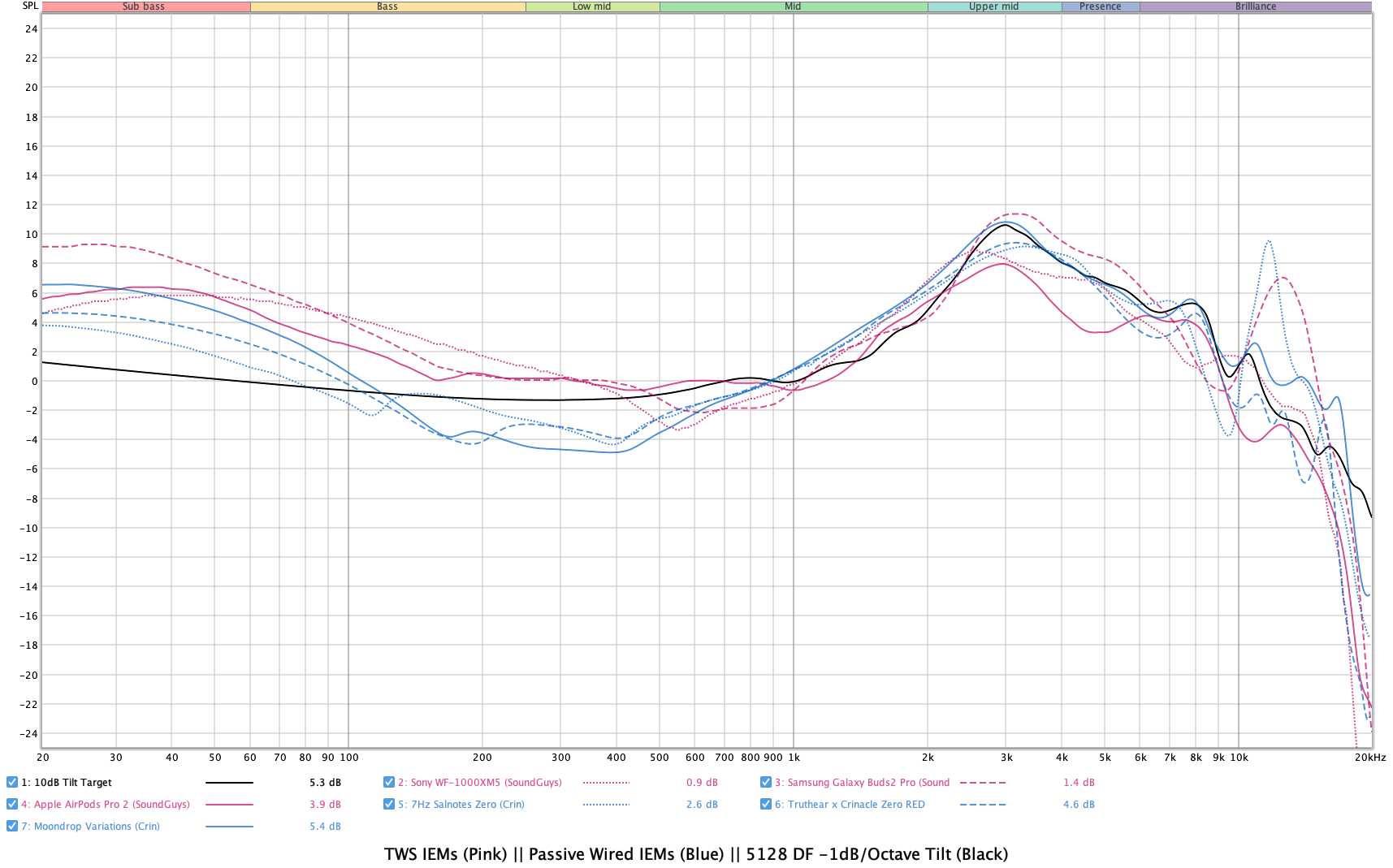
Fig. 15: Three popular true-wireless IEMs made by firms confirmed to have a B&K 5128 (Red) vs. three popular passive wired audiophile IEMs (Blue)
Perhaps more impressively, some manufacturers pulled off the unlikely feat of tuning to this target without a 5128 or DSP, solely using their ears and the tools every other IEM manufacturer has.
I’d like to shine a light on these special cases where products were seemingly legitimately ahead of their time, as I feel many of them deserve praise that they’ve not gotten. The first IEM I want to talk about is one all of my friends will know is coming, but many readers of this article may have never even heard of.

Audiosense DT200
This IEM came completely out of nowhere for me. I only learned of this brand’s existence in the immediate aftermath of generating the first ∆ target for Crinacle, when I was in a mad dash trying to find anything that met the target.
To my surprise, the most ∆-adherent IEM ended up being a $150 2BA IEM from 2019 that got very little acclaim on release, and then completely disappeared.
To test this newfangled target’s predictiveness of headphone-like tonality, I bought a pair… and I was floored with how normal it sounded compared to any IEM I’d heard prior, regardless of price.
The first thing I noticed: I could actually listen to IEMs at headphone-like levels. I’d not realized until then, that the tonality was a limiting factor on how loud I could comfortably listen to IEMs.
The bass was a little oversaturated and fluffy, lacking in impact and texture. The treble was mostly characterized by a single resonance around 13-14kHz that could be annoying on some tracks, and was dark otherwise (which perhaps made this peak more apparent).
But the midrange… my god. I’ve never heard an IEM sound so much like an HD 650 or decent speakers before, and even after chasing down and listening to a lot of the other IEMs on this list, I still haven’t.
Keen readers may even notice that the above criticisms (limp/fluffy bass, overly dark treble, lacking dynamics and texture) are the exact same criticisms that often get leveled at HD 650 as well.
Fig. 17: Audiosense DT200 calibrated to 4620 + Human DF HRTF, with the -1dB/octave tilted DF HRTF displayed as slope, in addition to preference bounds.
Well for one, it seems like the ∆ target works okay between 200-4000Hz. We see that the mids are indeed very adherent when measured on 5128, probably closer to the “10dB tilt” baseline than anything most of us may have seen from IEMs prior. The results are mostly comparable to a well-tuned headphone, and indeed I would say when it comes to value, that’s where DT200’s proposition is strongest: you get a reasonably headphone-like tonality in a comfy, small IEM with great isolation.
Unfortunately the DT200 has a few caveats that stop me from being able to wholeheartedly recommend it.
DT200 is a fully-sealed IEM, and thus sports a very strong occlusion effect as a result of its excellent isolation. There have been reports of unit variation and poor QC from several friends who have purchased units, the company itself hasn’t been great about responding with replacement units.
If you’re like Resolve, and have a longer canal than the Type 5128, you may also find that DT200 has much more glare between 4-6kHz than this 5128 measurement suggests (as a longer canal will shift energy from length mode resonance from 7kHz closer to 6kHz, and increase amplitude around the periphery of wherever it lands).
All of these could very well be deal breakers for any reader, but that’s not even the biggest one. The #1 deal breaker is… the DT200 is no longer in production.
This means that despite the DT200 actually being my favorite on this list (regardless of cost), it’s unfortunately not what I’d recommend people buy in 2023 if they want something tuned to this target. Even though to me it has all of the sonic hallmarks of a safe buy, unfortunately they just aren’t a viable pick any more.
However, many readers may already own what I’d recommend as a stand-in.
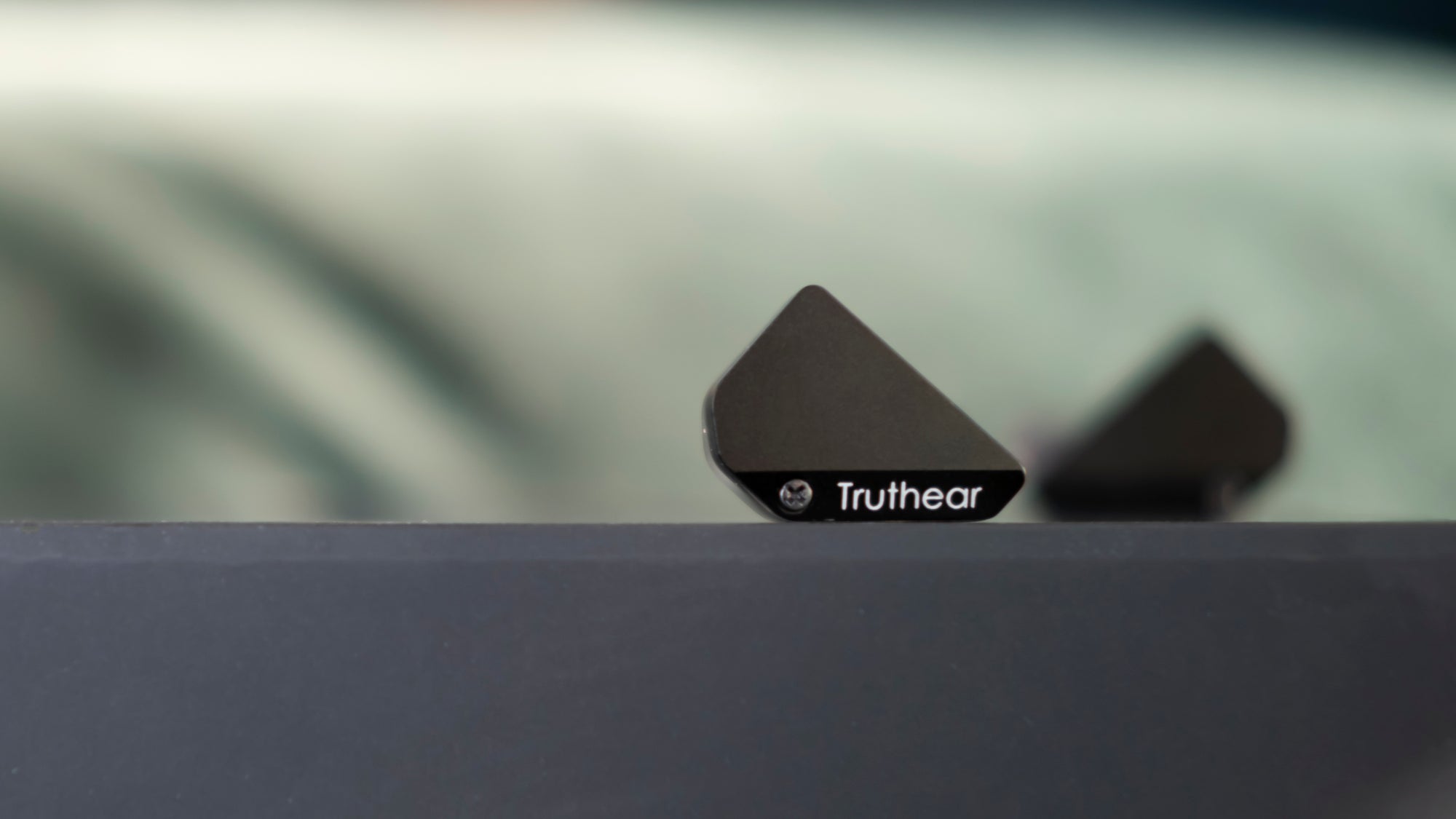
Truthear Hexa
Plenty have lobbed praise at this IEM for being a well-tuned and affordable option, and I’m here to add a little more to the pile. It’s the lowest-priced entry on this list by a considerable margin, but it—like the others on this list—presents a sound more akin to a well-tuned headphone than many other IEMs currently available.
This is mostly due to its utilizing a gentle, gradual slope to the bass response instead of the more common “contrasty” bass shelf often used by manufacturers tuning to IEF Neutral or Harman.
Fig. 18: Truthear Hexa calibrated to 4620 + Human DF HRTF, with the -1dB/octave tilted DF HRTF displayed as slope, in addition to preference bounds.
This fills in the lower-midrange deficit of the aforementioned targets and gives us a fuller, more tonally realistic presentation than most of the IEMs currently being sold at these prices.
As far as caveats go, they’re largely similar to the DT200: Dynamics and texture aren’t the greatest at this price, nor is the build or QC. It’s also not quite as small or comfy as the DT200. You can only do so much at this price.
But caveats aside, it’s hard for me to look at the Hexa and see anything other than an exceedingly well-tuned IEM at its price point, one that I’d choose over options many times its price on its tuning merits alone.

64 Audio U6t
I mentioned in my previous article that the U6t has “one of my favorite IEM midrange tunings on the market” so naturally, it makes an appearance on this list.
U6t opts for a midrange tonality that is incredibly similar to the Symphonium Meteor, but with a more reserved approach to bass that goes a significant way to making it a more versatile, all-rounder kind of IEM.
Fig. 16: 64 Audio U6t calibrated to 4620 + Human DF HRTF, with the -1dB/octave tilted DF HRTF displayed as slope, in addition to preference bounds.
The midrange on this IEM is sweet, inviting, and ever-so-slightly tilted towards overtones. Vocals are presented with appropriate harmonic complexity, even at the top of their ranges. Guitars sound full but still have the bite to be aggressive when called upon. Snares have the requisite beef to balance their bark, and kick drums sound weighty but not muddy.
Unfortunately, the 64 Audio U6t being a higher priced IEM means that 64 Audio took a risk with its tuning to increase perceived technical performance, and this is where I start to fall out of love with what is an otherwise stellar IEM.
The treble character of the U6t is defined chiefly by two resonances above 8kHz that no amount of tip rolling was able to address. While this does lead to the U6t being more detailed, more dynamic, and more engaging sounding than something like the Symphonium Meteor, I would personally opt for the Meteor because those resonances started to bother me pretty quickly.
That being said, I’m notoriously treble-sensitive (more so than most people I talk to around these parts) so it’s likely that most readers when met with the U6t will find that aspect more livable than I do. If one can jive with that aspect of U6t’s signature, it’s a very well-rounded IEM for the price. One that, due to the midrange prowess, I’d even take over its big brother the U12t.
64 Audio U6t In-Ear Headphones

Letshuoer Cadenza12
On the first day of CanJam NYC earlier this year, I had already tried most of the things I’d listed as “must hears,” but I wanted to go around and see some of my friends from other brands, like Joseph from Letshuoer or Dan from Audio-Technica.
I sat down at the Letshouer booth, exchanged brief pleasantries with Joseph, and he handed me their new flagship: the Cadenza12, a mirror-finished IEM costing $2300. I’d never heard a Letshuoer IEM, but I'll be damned if this wasn’t my favorite IEM from CanJam NYC 2023.
Fig. 18: Letshuoer Cadenza12 calibrated to 4620 + Human DF HRTF, with the -1dB/octave tilted DF HRTF displayed as slope, in addition to preference bounds.
The midrange on this one is thick. Density is the name of the game with the Cadenza12, as it sounds mostly natural but with a little bit of extra bloom—kind of reminiscent of the DT200 tonally, but with much more weight behind it.
However, what Cadenza12 does that DT200 doesn’t is dynamics. Kick and snare drums on the Cadenza12 are sack-of-potatoes heavy, but still very articulate on the front end of their transients. They have no shortage of speed or agility, but still hit extremely hard.
Unfortunately when I got time with Cadenza12 at home, I learned I didn’t love the rest of the tonality enough to overall prefer it to other IEMs like the Meteor, even though the technical performance is clearly leagues ahead.
Cadenza12 is simply a bright IEM above 3kHz. It has a boosted 5kHz region, which introduces hardness to the attack of drums and cymbals. It’s engaging and jarring, but can also kind of homogenize instruments to all sound similarly glarey and sharpened. Additionally, the unit I have on hand is significantly boosted above 8kHz, enough that vocals and hi-hats nearly always have too much air, hash, and breath.
Echoing my take on the U6t, I’ve encountered plenty of people for whom the boosted treble of the Cadenza12 is a feature, not a bug. So if you find yourself to be one of the more treble-tolerant listeners out there, the midrange—as well as technical performance—might be the best on this list full-stop, and it’s why I think Cadenza12 deserves way more attention than it got on release.
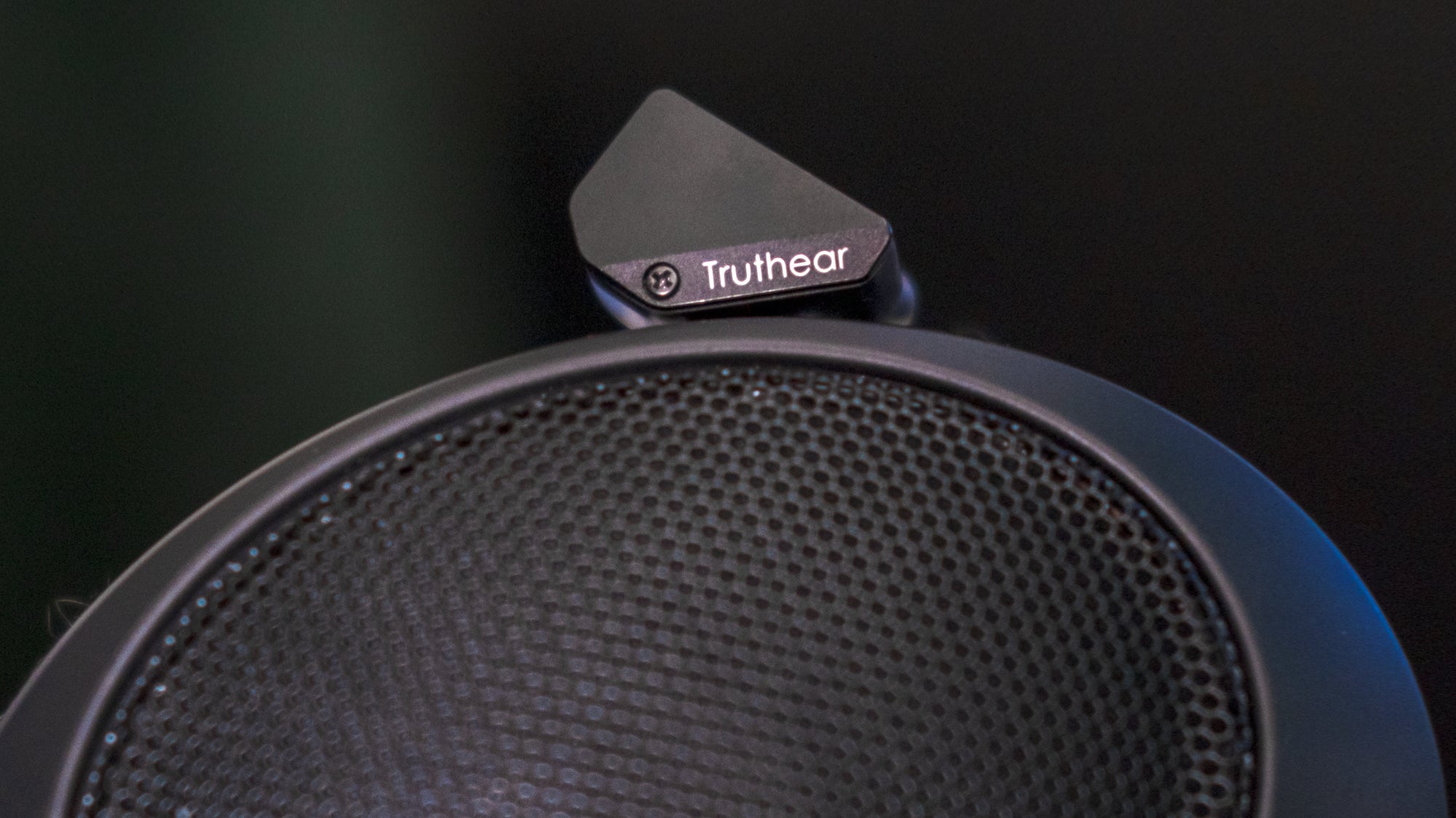
Conclusion
I’m at a point where every time I get asked for purchase advice about IEMs, I respond with: “Wait for new IEMs to start coming out; we’re on the precipice of a sea change.”
It’s my belief that the 5128 is going to significantly change the landscape of IEMs as a whole, but it may be a bit of a wait before manufacturers can afford a 5128 (or widely adopt comparable-sounding 711 targets).
The IEM market and hobby are only just now beginning to understand what this new measurement system means for how we digest and communicate our experiences with audio, and I offer that this article is only useful insofar as it assists the reader in understanding where the IEM market is today, how we got here, where we might be going, and how to get there.
The aim is not to dictate what the future ought to be, but in case it isn’t obvious, I think we should take the data from the 5128 very seriously.
That being said, if you don’t find the measurements from the 5128 to be more representative of your experience, or don’t prefer the tonality of a 5128-influenced target, that is both fine and totally reasonable. The 5128’s ear canal is just an average, and the 5128 is just one head. You may be like me, for whom results match very well, or like Resolve, where 5128 measurements aren’t always quite right above 1kHz for you. And of course, there’s always the element of preference.
However, an IEM version of the HD 650 may very well be on the horizon, and I hope it comes sooner rather than later. Even though we’ve had some great IEMs up to this point, I believe it’s crucial we still acknowledge that our understanding of the very nature of IEMs and their measurements as consumers, reviewers, and manufacturers is still evolving… and I hope this article serves our shared evolution well.
While we may not have IEMs that sound like headphones yet, we’ve truly never been closer.
If you have any questions about this article, feel free to ping me in our Discord channel, which is where me and a bunch of other headphone and IEM enthusiasts hang out to talk about stuff like this. Thanks so much for reading. Until next time!


